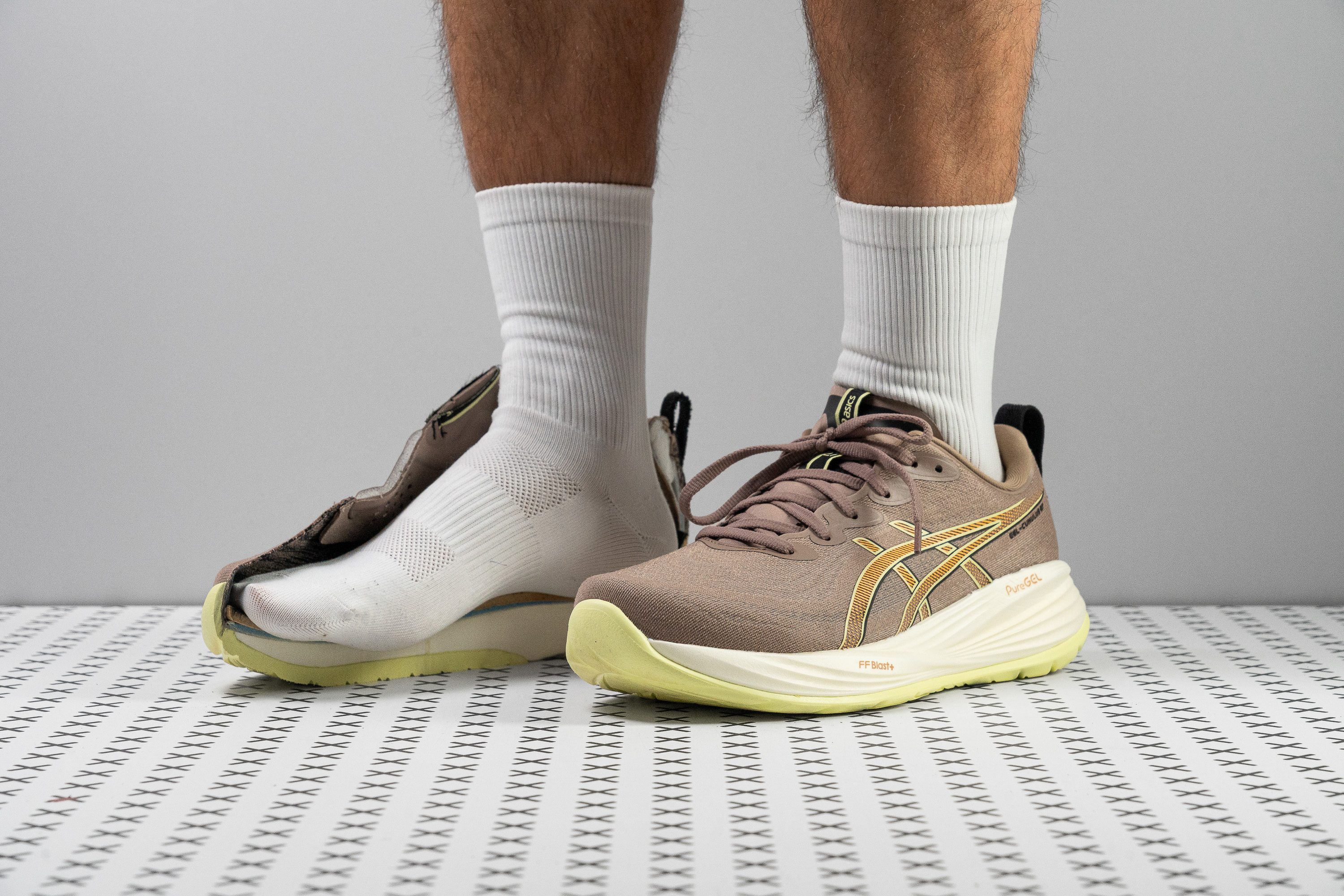Our verdict
- Top pick in best ASICS walking shoes
Pros
- More foam than ever!
- Plush and durable upper
- Wide midsole enhances stability
- Smooth, natural transitions
- Semi-gusseted tongue improves lockdown
- Reasonably priced
- Keeps the same weight
- Soft-landing FluidRide EVA outsole
Cons
- Breathability needs improvement
- Outsole durability concerns
- Lacks energy return
- Toebox should be roomier
Audience verdict
- Top 10% in running shoes for narrow feet
- Top 26% in running shoes for walking
- Top 19% most popular running shoes
Comparison
The most similar running shoes compared
+ + Add a shoe | |||||
|---|---|---|---|---|---|
| Audience score | 88 Great! | 88 Great! | 92 Superb! | 86 Good! | |
| Price | $140 | $150 | $170 | $85 | |
| Pace | Daily running | Daily running | Daily running | Daily running | |
| Arch support | Neutral | Neutral | Neutral | Neutral | |
| Weight lab Weight brand | 9.2 oz / 261g 9.3 oz / 265g | 9.7 oz / 275g 9.8 oz / 277g | 9.9 oz / 281g 10.2 oz / 289g | 9.5 oz / 268g 9.2 oz / 260g | |
| Drop lab Drop brand | 11.6 mm 8.0 mm | 12.4 mm 8.0 mm | 12.7 mm 6.0 mm | 11.8 mm 8.0 mm | |
| Strike pattern | Heel | Heel | Heel | Heel | |
| Size | True to size | True to size | Slightly small | True to size | |
| Midsole softness | Soft | Soft | Soft | Balanced | |
| Difference in midsole softness in cold | Normal | Small | Small | Small | |
| Toebox durability | Good | Good | Decent | Decent | |
| Heel padding durability | Good | Good | Good | Good | |
| Outsole durability | Bad | Decent | Good | Good | |
| Breathability | Warm | Moderate | Moderate | Moderate | |
| Width / fit | Medium | Medium | Medium | Medium | |
| Toebox width | Medium | Medium | Medium | Medium | |
| Stiffness | Moderate | Moderate | Moderate | Moderate | |
| Torsional rigidity | Stiff | Stiff | Stiff | Moderate | |
| Heel counter stiffness | Stiff | Moderate | Stiff | Moderate | |
| Rocker | ✗ | ✓ | ✓ | ✗ | |
| Heel lab Heel brand | 40.9 mm 38.5 mm | 44.4 mm 42.0 mm | 44.1 mm 44.0 mm | 35.2 mm | |
| Forefoot lab Forefoot brand | 29.3 mm 30.5 mm | 32.0 mm 34.0 mm | 31.4 mm 38.0 mm | 23.4 mm | |
| Widths available | NormalWideX-Wide | NarrowNormalWideX-Wide | NormalWide | NormalWideX-Wide | |
| Orthotic friendly | ✓ | ✓ | ✓ | ✓ | |
| Season | All seasons | All seasons | All seasons | All seasons | |
| Removable insole | ✓ | ✓ | ✓ | ✓ | |
| Ranking | #121 Top 33% | #118 Top 32% | #17 Top 5% | #179 Top 49% | |
| Popularity | #67 Top 19% | #4 Top 2% | #132 Top 36% | #84 Top 23% |
Who should buy
The ASICS Gel Cumulus 27 is a solid recommendation for:
- Runners in colder climates looking for a no-frills, versatile daily trainer.
- Fans of the previous Cumulus who don’t mind gaining extra stack height for longer runs.
- Heel strikers wanting one all-around shoe for running, daily wear, and occasional gym sessions.
- Those who dislike ultra-rockered shoes from recent years—the Cumulus 27 keeps a traditional, low-curved forefoot that feels more natural underfoot.
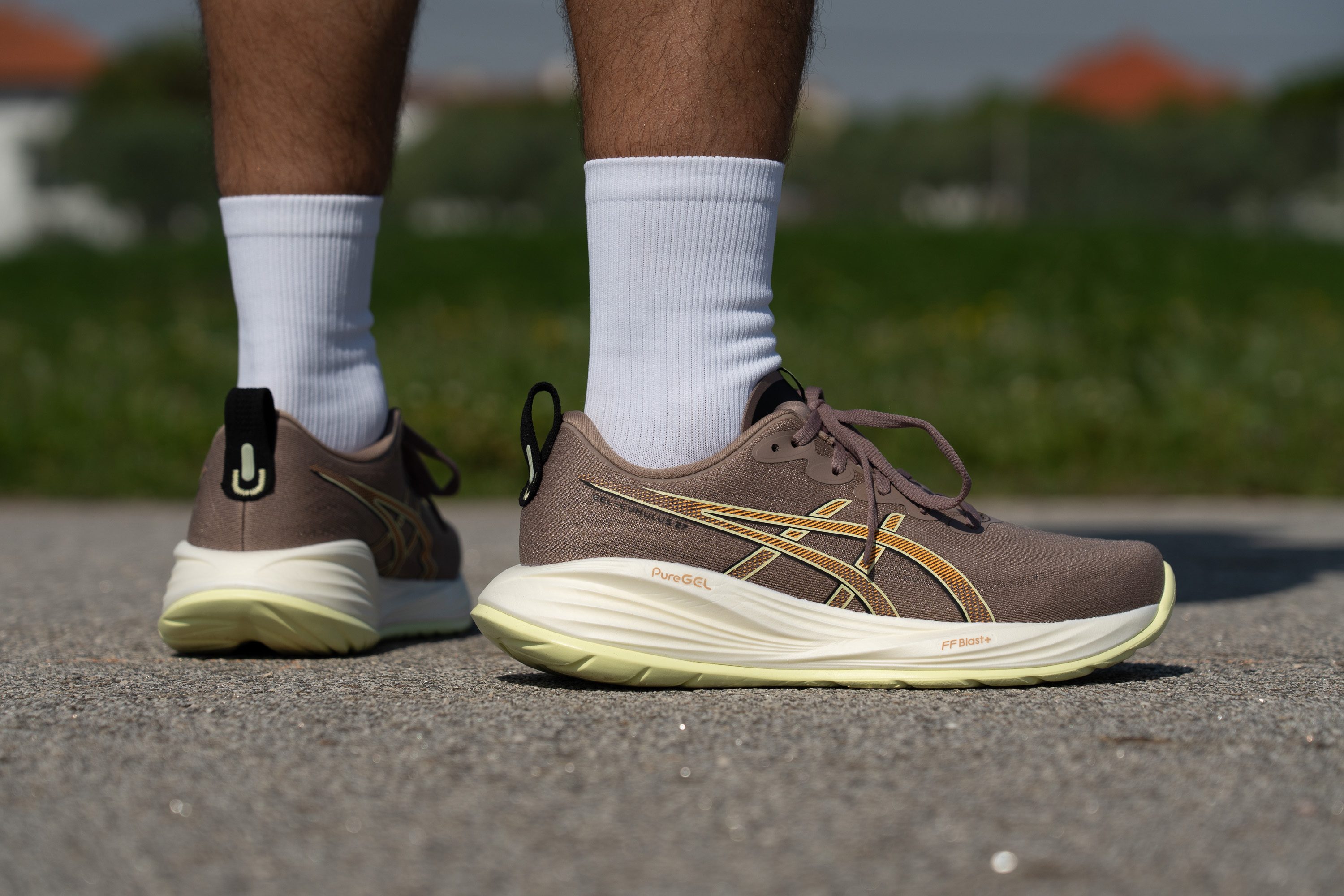
Who should NOT buy
We believe that the Cumulus 27 isn’t the best option for runners who prioritize breathability. After testing it in the lab, we rated its ventilation poorly, and from our perspective, it’s a bad pick for hot-weather runs. Instead, the breathable uppers on the Hoka Mach 6 or Brooks Glycerin 22 are far better suited for those conditions.
We also think that the Cumulus 27 lacks energy return—especially for heel strikers landing on the PureGEL insert. For a more bouncy and fun experience, we recommend the Adidas Adizero EVO SL or the ASICS Novablast 5.
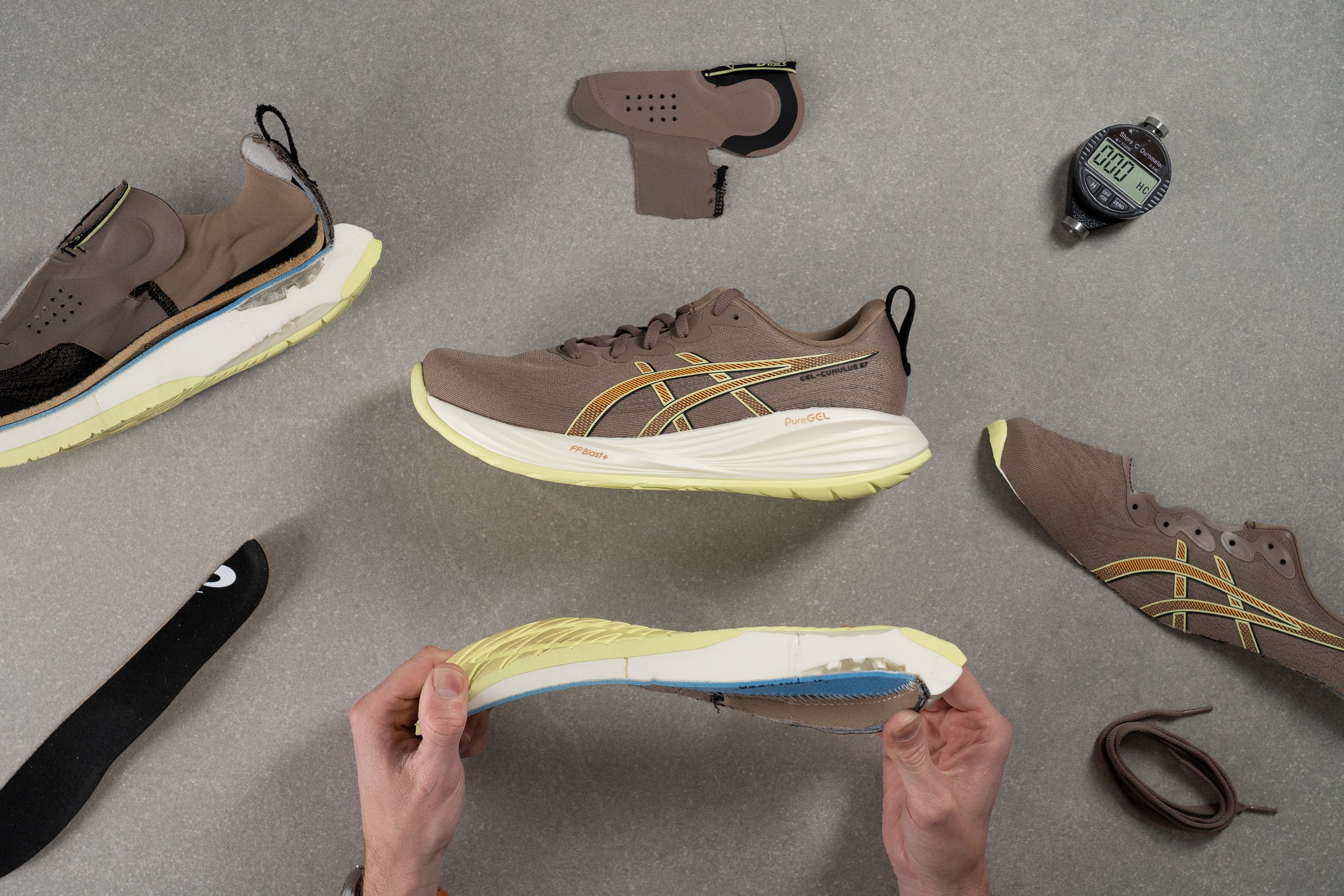
Cushioning
Shock absorption
Many runners complained about the lack of shock absorption in v26, so ASICS made some tweaks to fix that. With 136 SA in the heel, this version offers better protection and feels more suited for long runs.
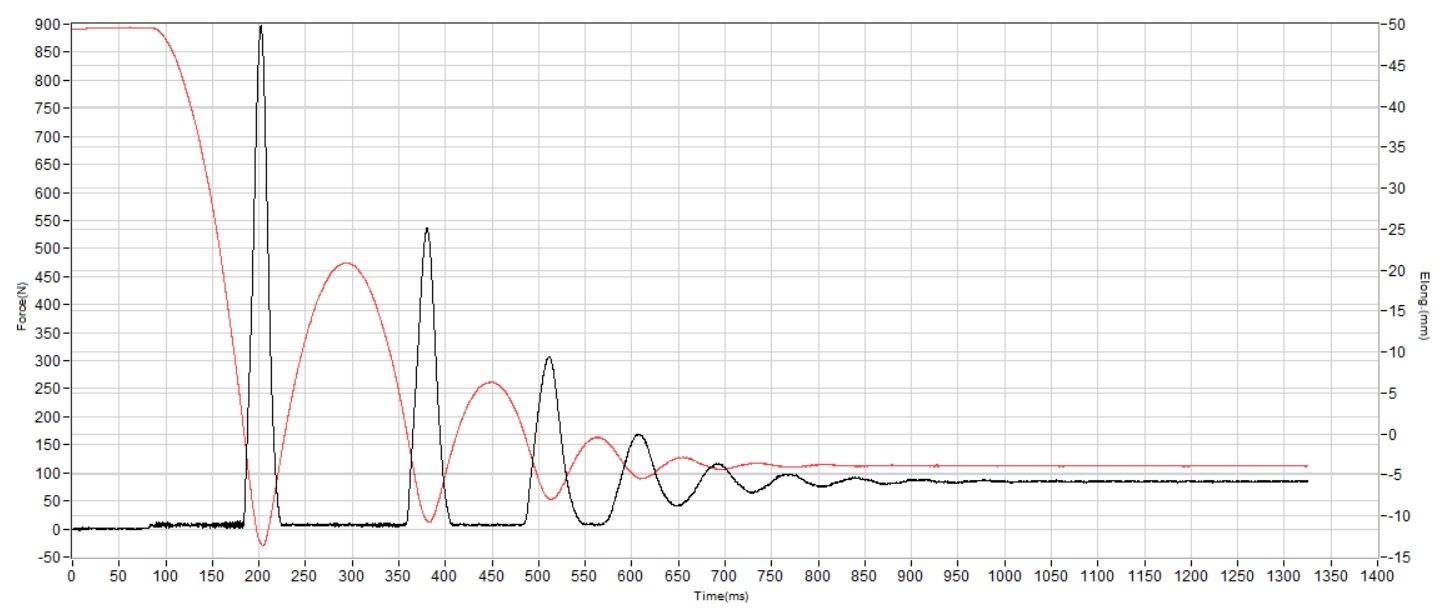
| Gel Cumulus 27 | 136 SA |
| Average | 130 SA |
Energy return
The Cumulus 27 keeps the same midsole as last year, but gains a slight boost in energy return thanks to a bit more foam underfoot. We measured 49.4%—almost reaching 50%—though still a budget-grade result for a shoe that's not cheap at all.
| Gel Cumulus 27 | 49.4% |
| Average | 58.6% |
Heel stack
The days when the Cumulus was a moderate-stacked daily trainer are long gone. With this latest update, we discovered that ASICS has fully embraced the maximalist trend—reaching a towering 40.9 mm of stack height.
That’s a big leap from the 36.8 mm of its predecessor and adds appeal for runners who want extra joint-friendly, muscle-saving protection during long miles. On the flip side, if you're after a more ground-connected ride, grabbing the Cumulus 26 at a nice discount might be the smarter move while it’s still available.
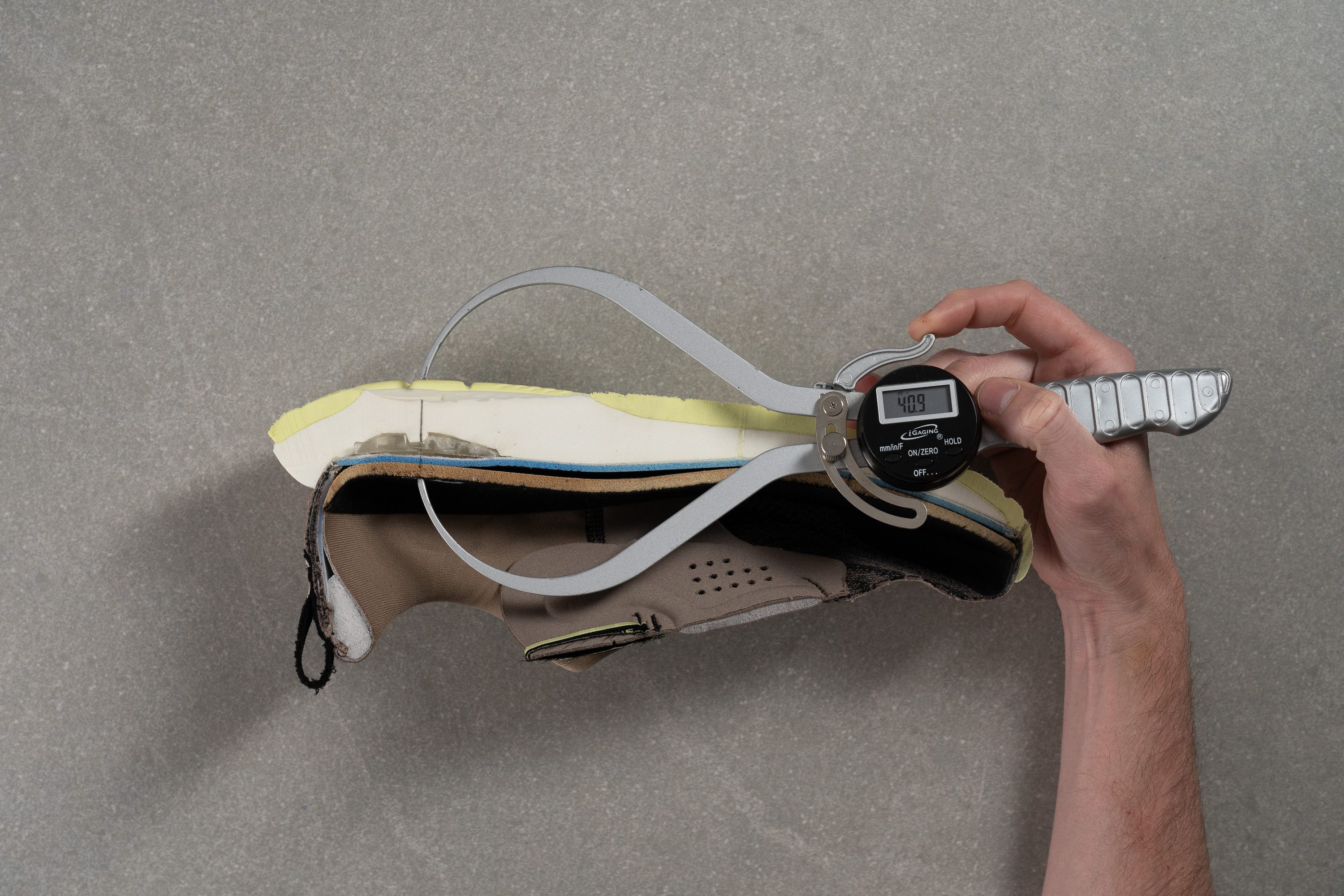
| Gel Cumulus 27 | 40.9 mm |
| Average | 34.8 mm |
Forefoot stack
The forefoot also gained height, nearly hitting the 30 mm mark but landing at 29.3 mm in the US size 9 we tested. Combined with the heel, the Cumulus 27 becomes a top choice for long runs.
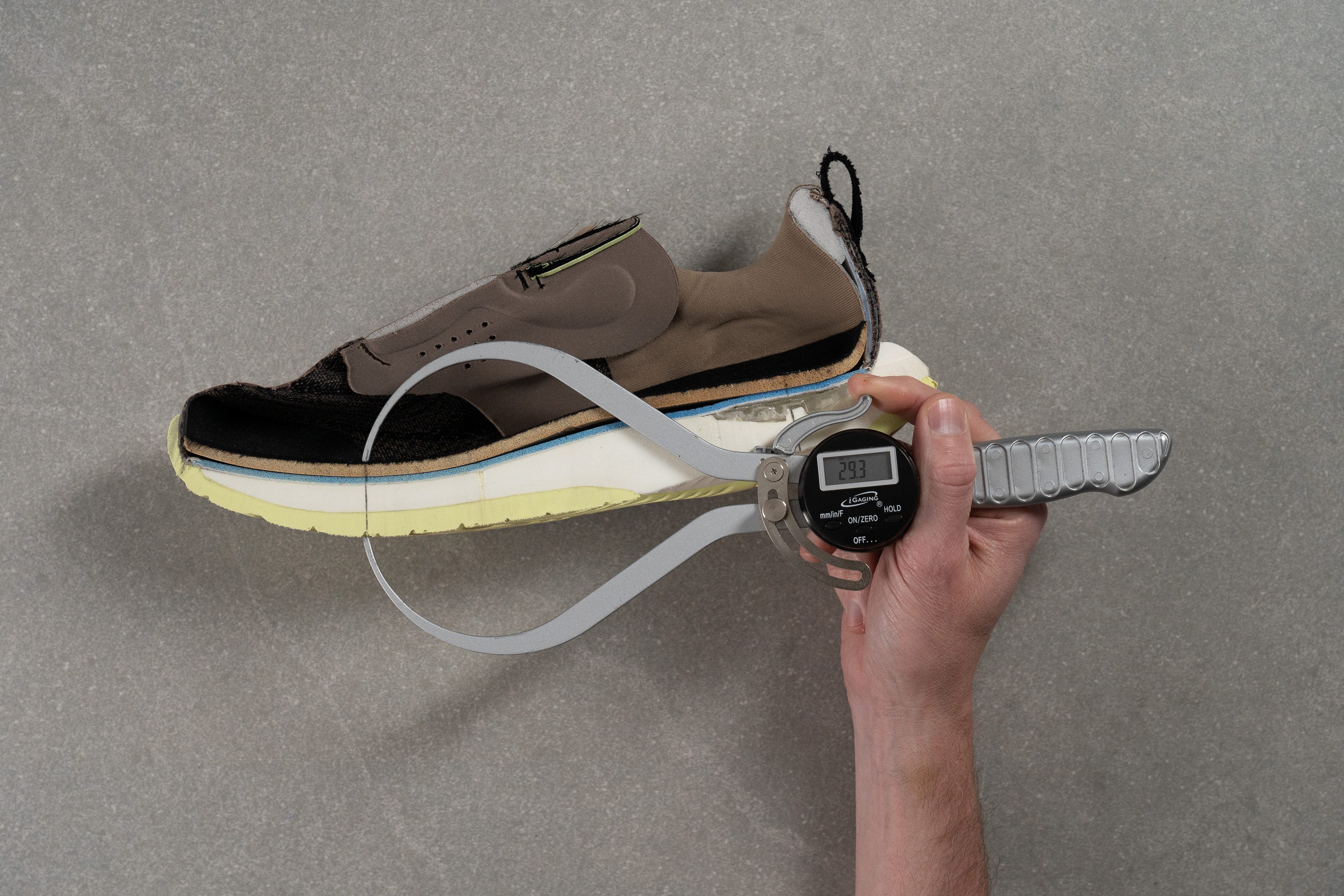
| Gel Cumulus 27 | 29.3 mm |
| Average | 26.2 mm |
Drop
Calculating the difference from our previous two measurements gave us an 11.6 mm heel-to-toe drop. That's a higher-end figure that will benefit heel strikers.
We believe it might feel a bit too steep for midfoot or forefoot strikers, unless they're aiming to ease pressure on the calves and Achilles tendon.
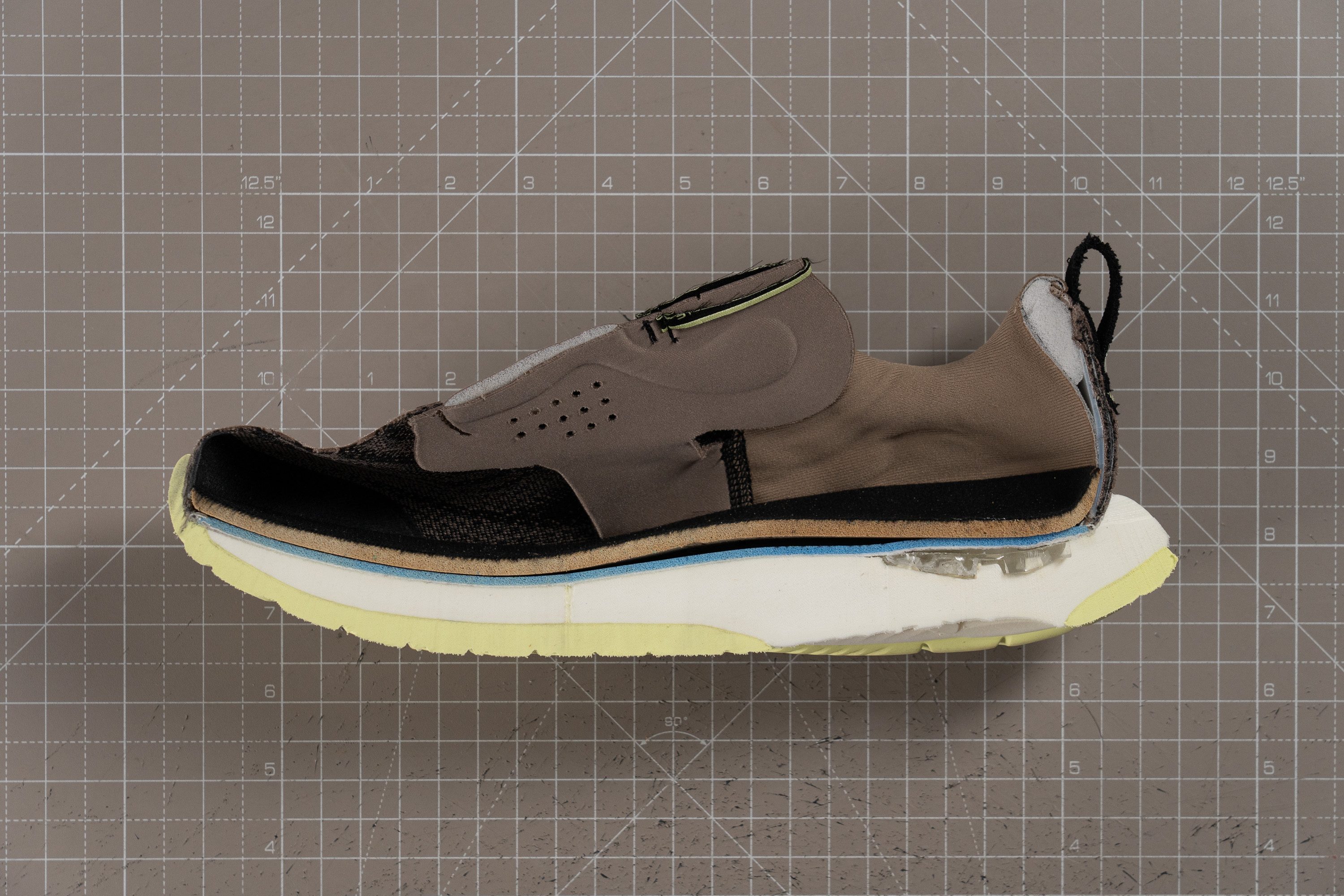
| Gel Cumulus 27 | 11.6 mm |
| Average | 8.6 mm |
Midsole softness
There’s nothing radically new in the midsole composition of the Cumulus 27 compared to its predecessor. It still uses a dual-foam setup with a thick, top layer of FF Blast+. This foam is a blend of EVA and Olefin Block Co-Polymers found in many of ASICS' daily trainers.
FF Blast+ ECO definitely gets the job done. We tested it and found it durable enough, with a decent bounce and a smooth, comfort-first feel underfoot.
The softer formulation of this update clocked in at 15.9 HA on our Shore A durometer, a bit softer than its predecessor and delivering a ride that feels right for its price range.
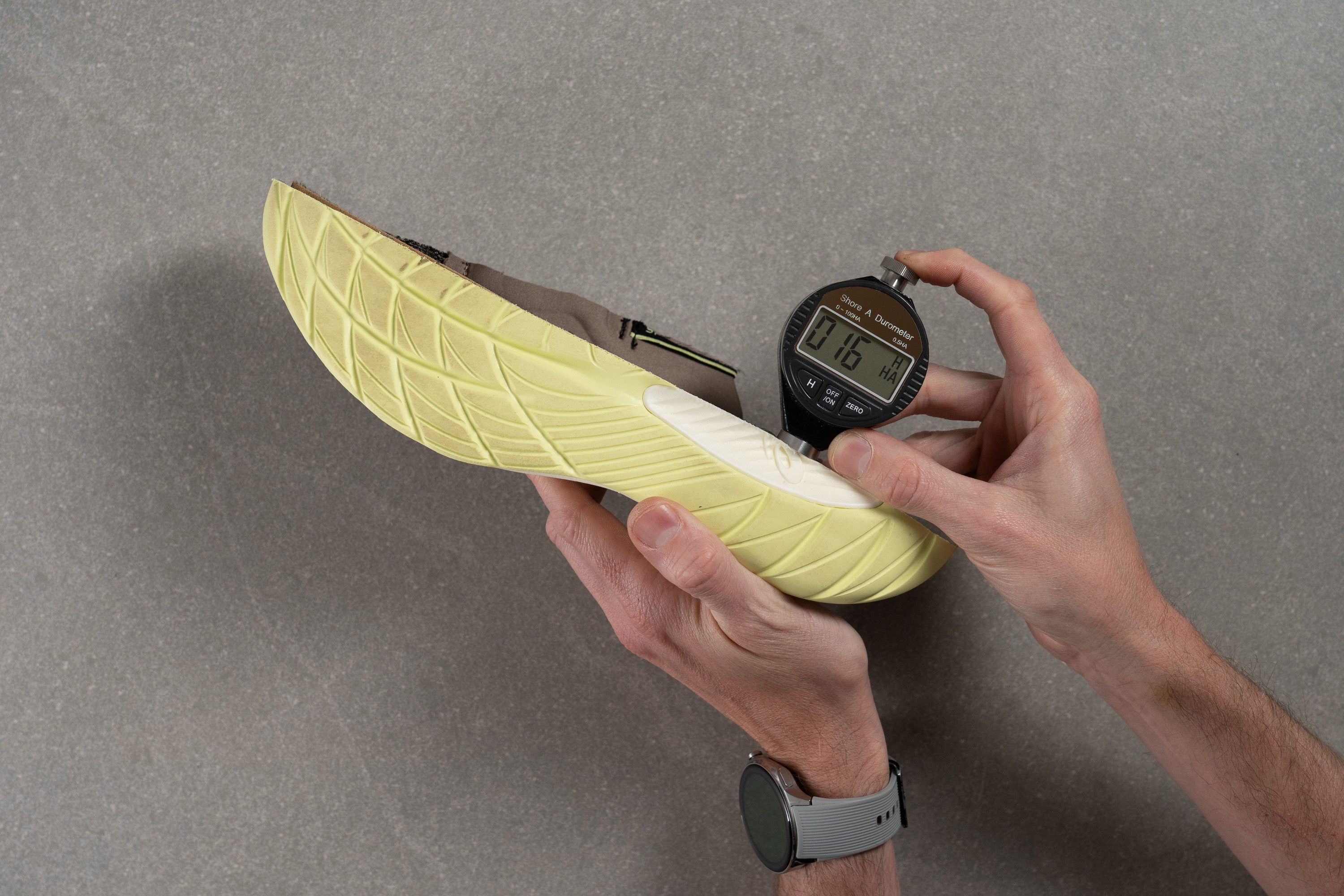
| Gel Cumulus 27 | 15.9 HA |
| Average | 20.4 HA |
Secondary foam softness
The secondary layer uses a much firmer EVA foam—measuring 27.4 HA—that also acts as the outsole of the Cumulus, though we’ll dive deeper into that later in this lab review.
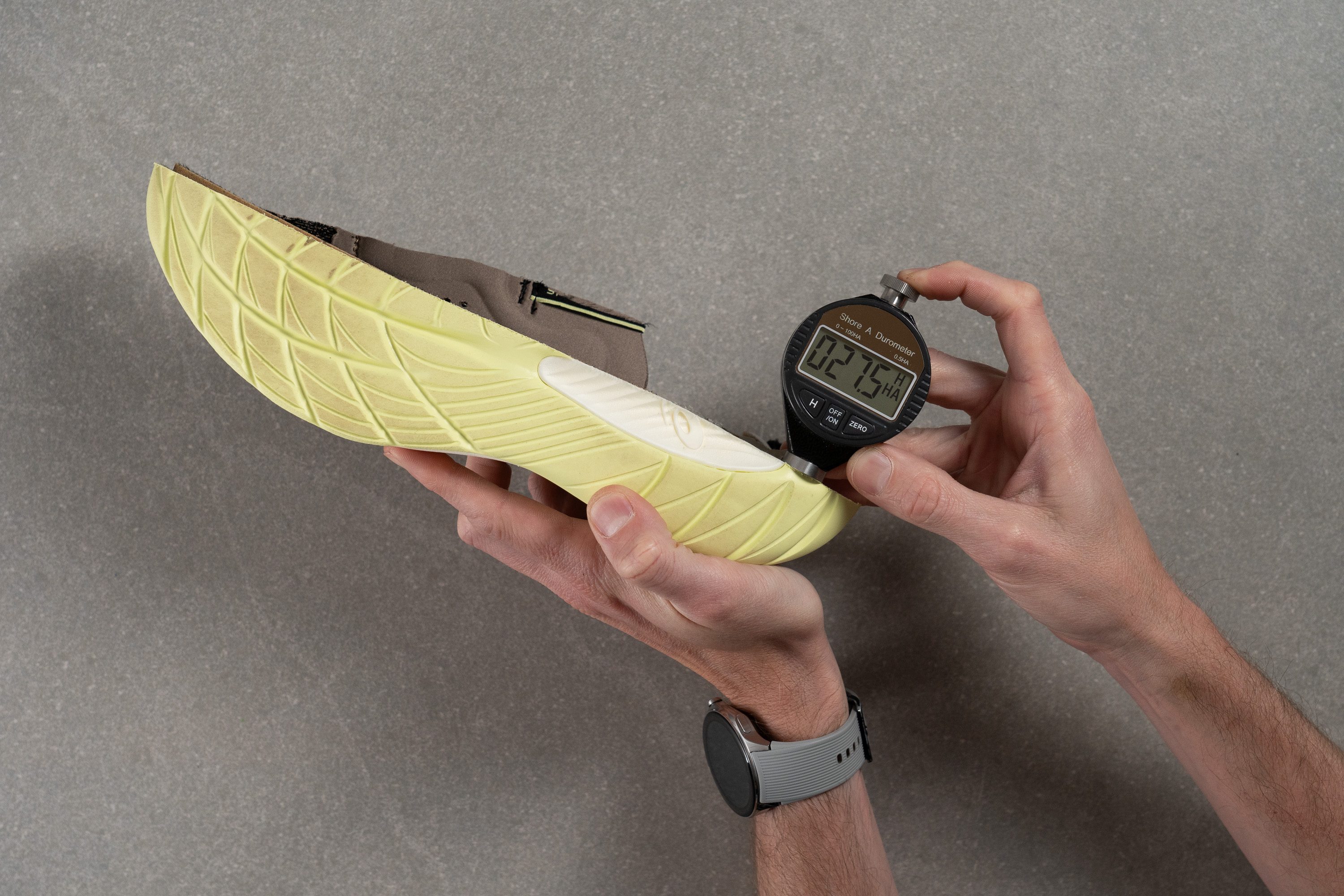
| Gel Cumulus 27 | 27.4 HA |
| Average | 22.6 HA |
Rocker
In a market packed with rocker-heavy shoes, we found it refreshing that this long-running series keeps a moderate forefoot rocker.
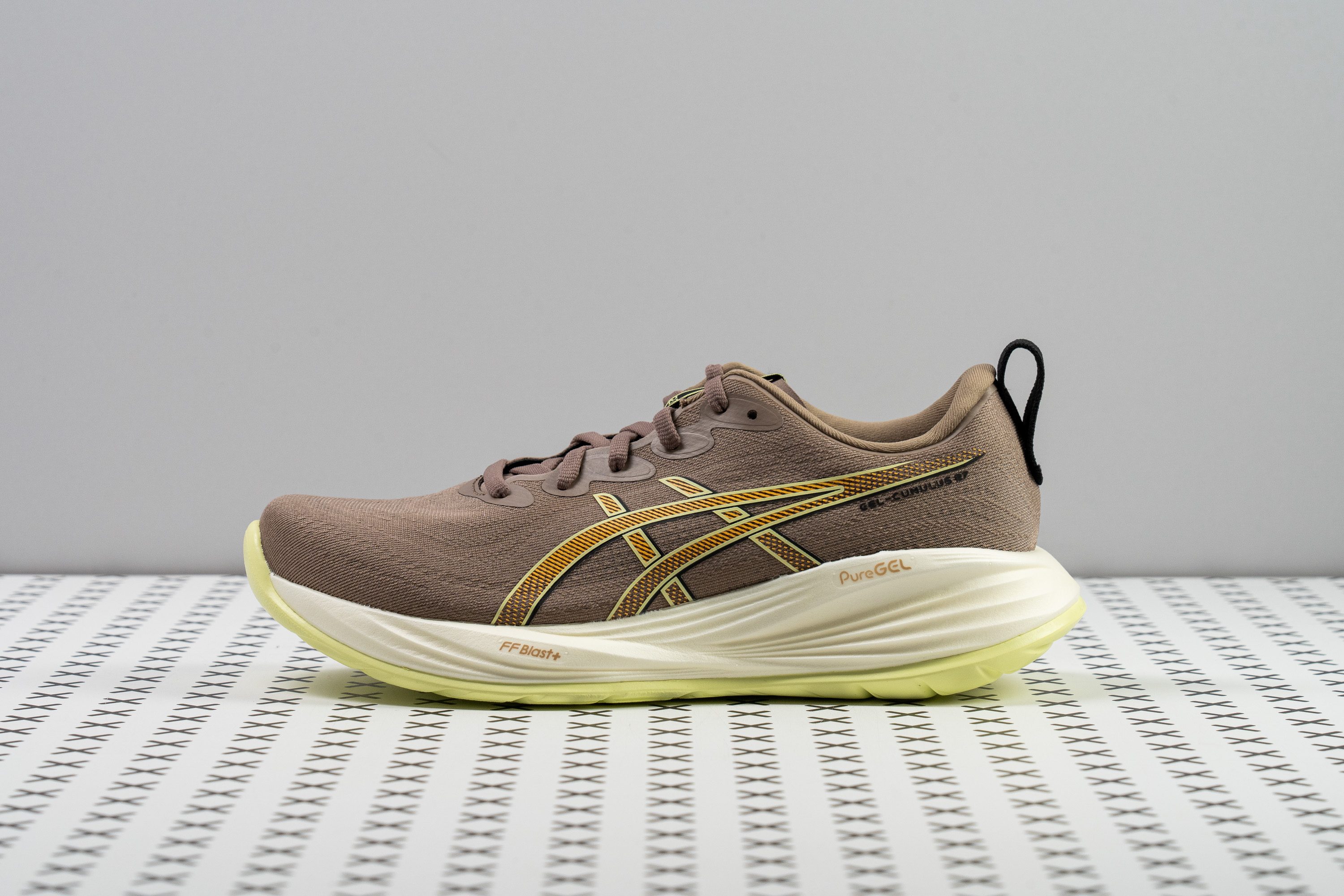
On the other hand, the heel curvature has been carefully reshaped with each generation to enhance forward motion. We think it’s a smart choice, especially with the well-defined heel bevel that eases transitions for extreme heel strikers.
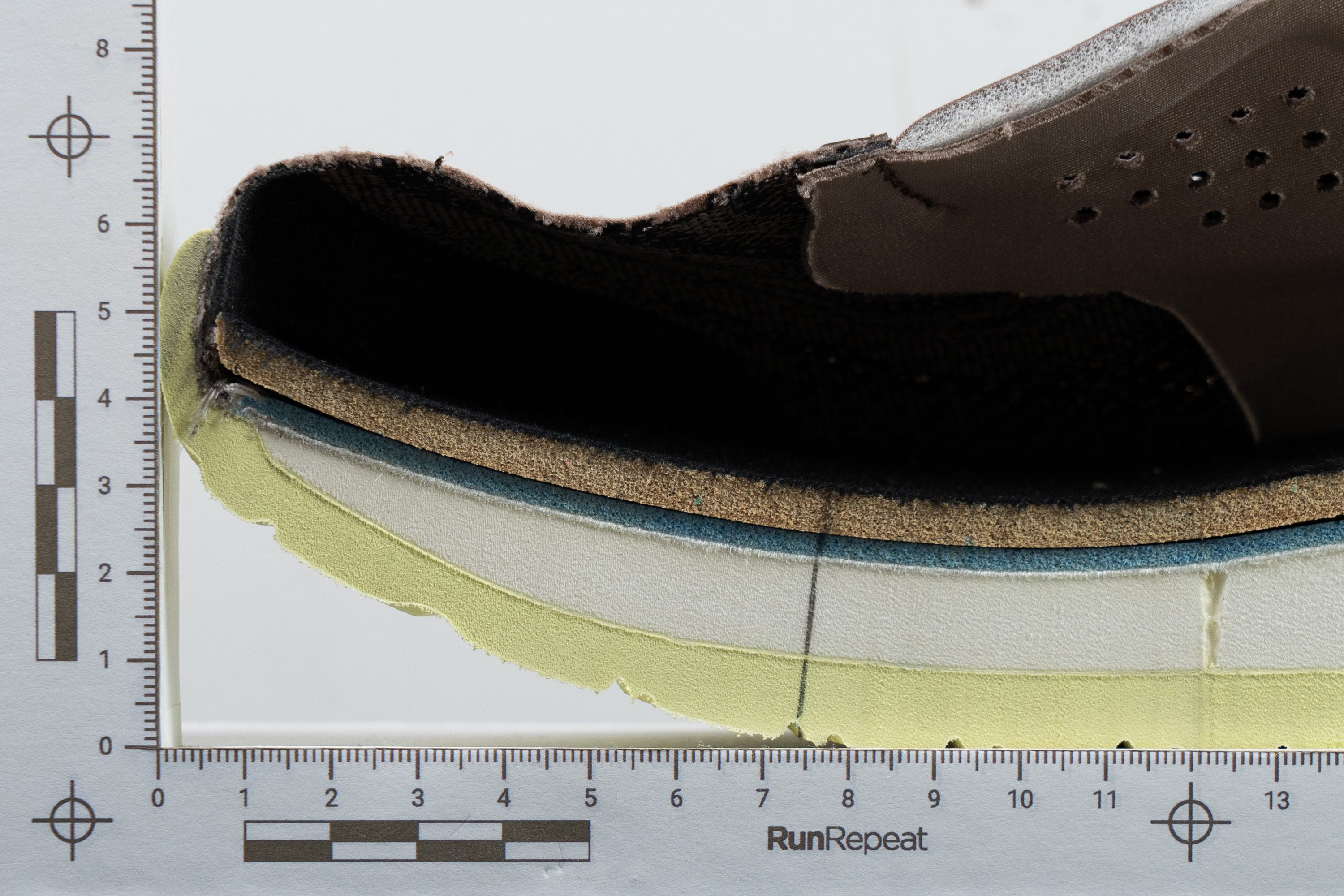
PureGEL
We found the same PureGEL insert that carries over from the previous version, which is a modernized, comfort-focused twist on the classic GEL tech from ASICS. It’s placed in the heel and meant to smooth out landings without adding bounce.
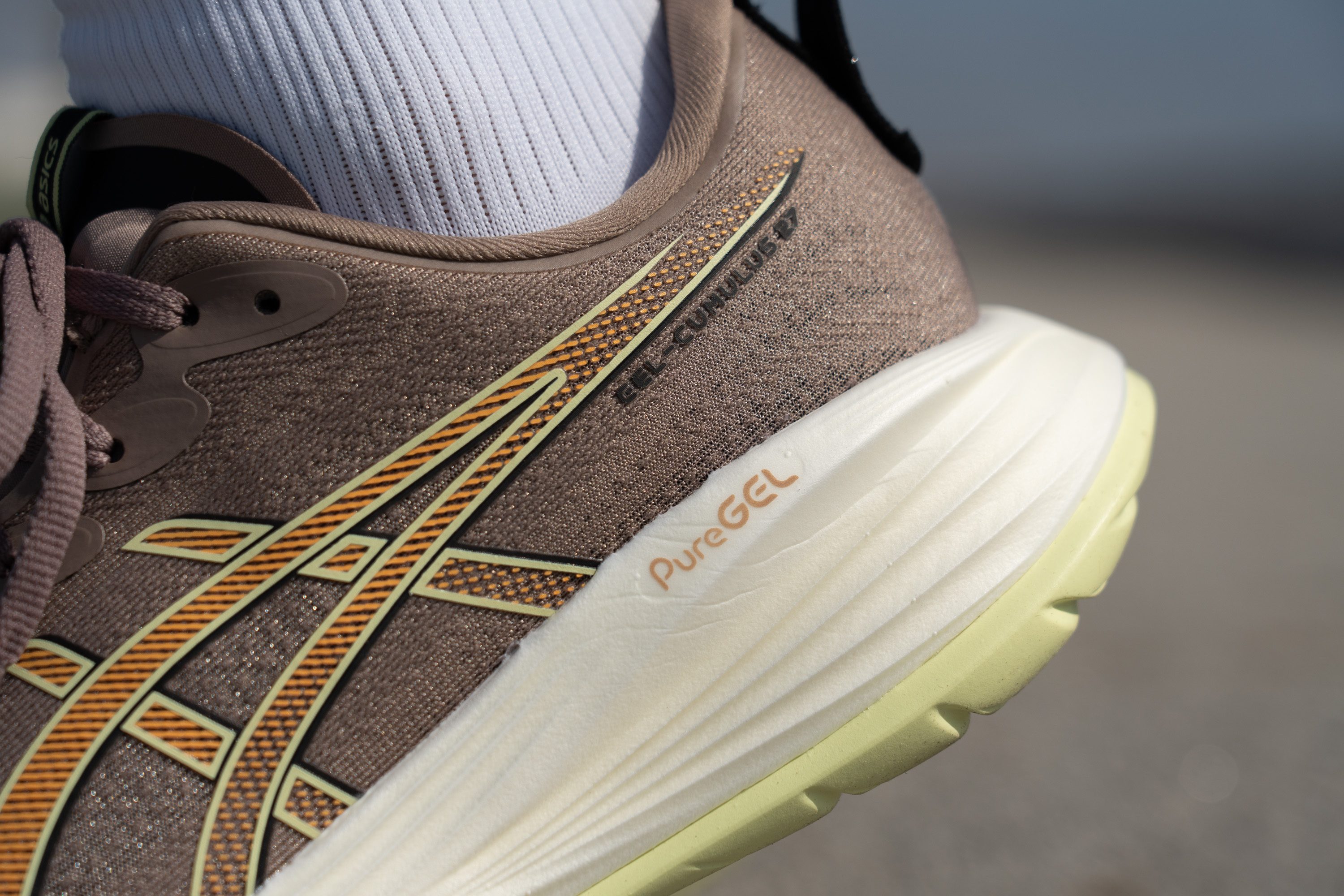
For midfoot or forefoot strikers, it's not noticeable at all. And if you're expecting a spring-loaded boost, this isn’t it. PureGEL is here to create add comfort to the ride—not a faster, energy-returning feel.
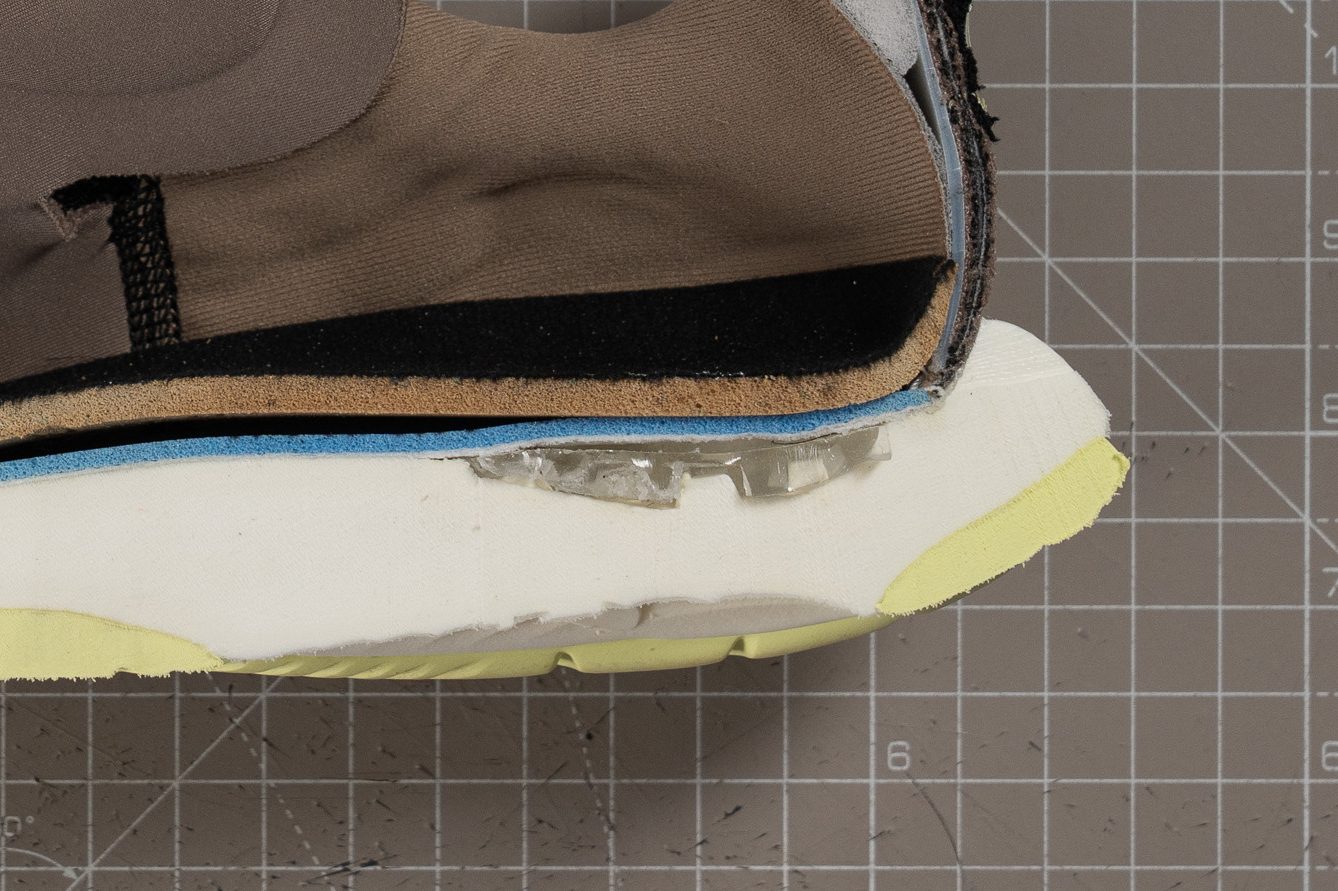
Size and fit
Size
ASICS Gel Cumulus 27 fits true to size (36 votes).
Width / Fit
We measured the width of our gel mold and recorded 93.9 mm. That’s slightly below what we’d expect for a comfortable daily trainer.
Still, the number lands near the average, and we found that it works very well for runners with narrow or even medium-width feet. On top of that, ASICS does offer a wide version, but only in select markets.
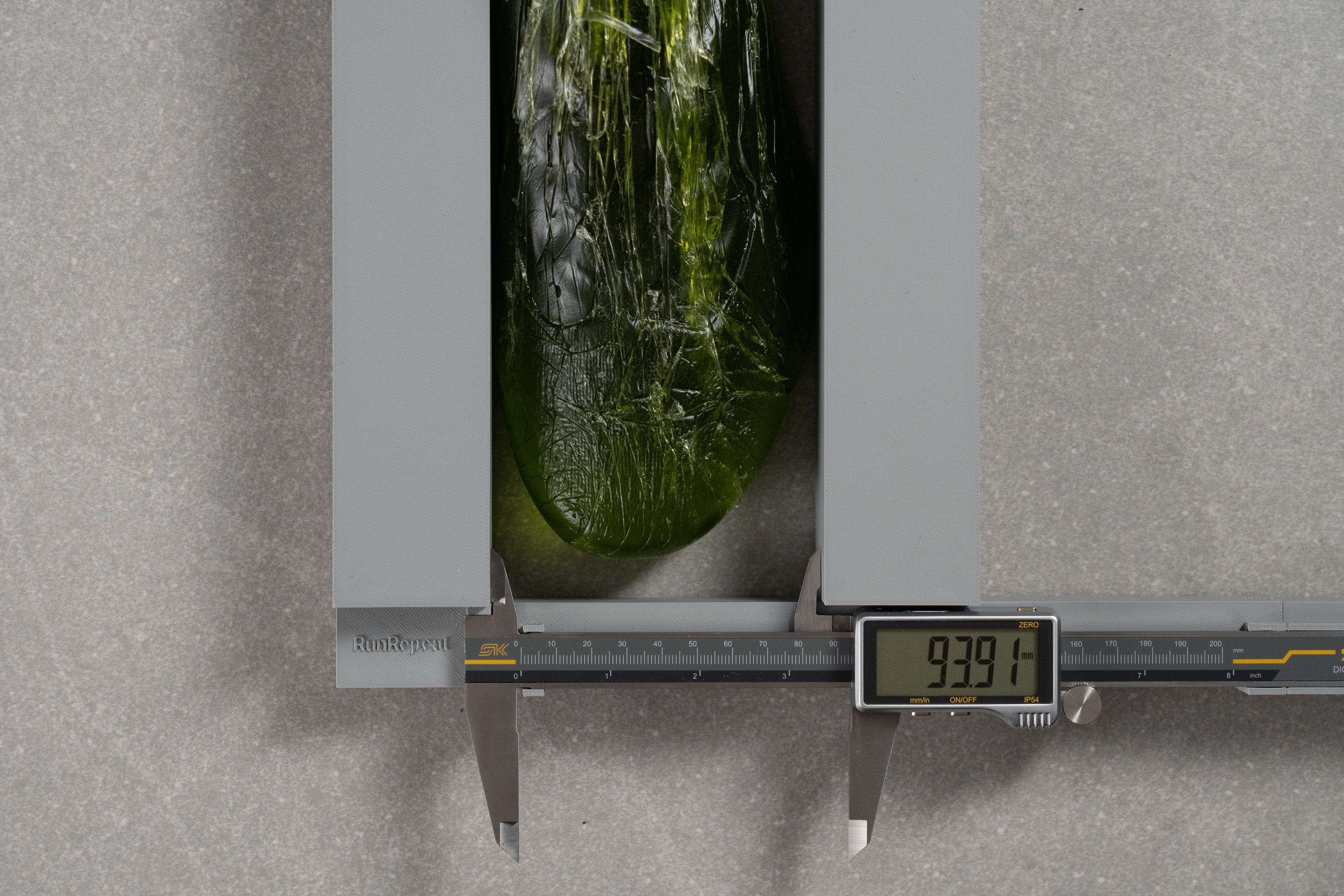
| Gel Cumulus 27 | 93.9 mm |
| Average | 95.1 mm |
Toebox width
The big toe area follows the same pattern as the previous measurement, offering slightly less room than the average running shoe based on our 71.1 mm result.
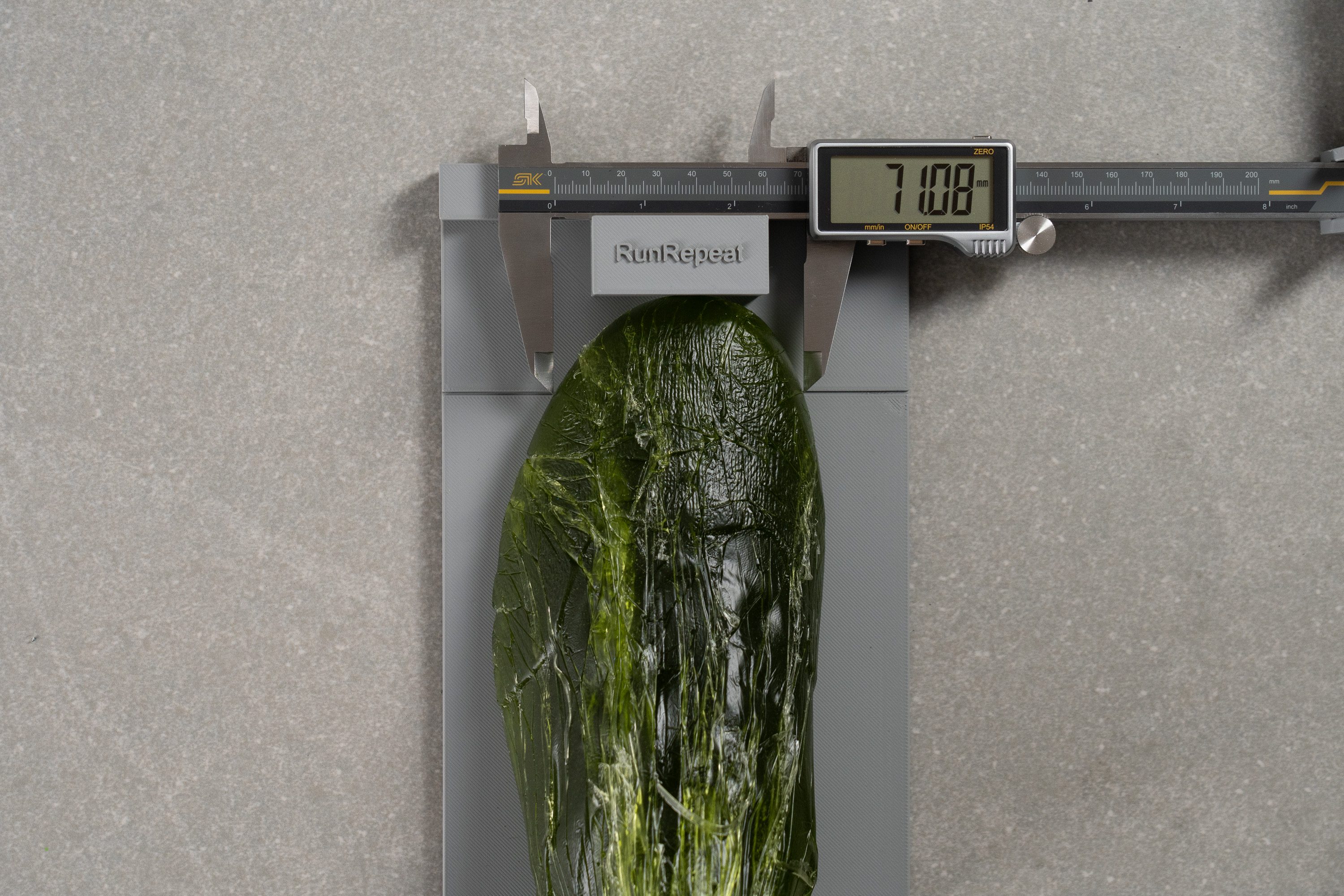
| Gel Cumulus 27 | 71.1 mm |
| Average | 73.3 mm |
Toebox height
However, the Cumulus 27 offers plenty of vertical space in the toebox, making upward toe movement feel easy and natural.
Runners who prefer snug-fitting uppers might find it slightly loose, but for long runs, that extra wiggle room helps prevent pressure and toe discomfort.
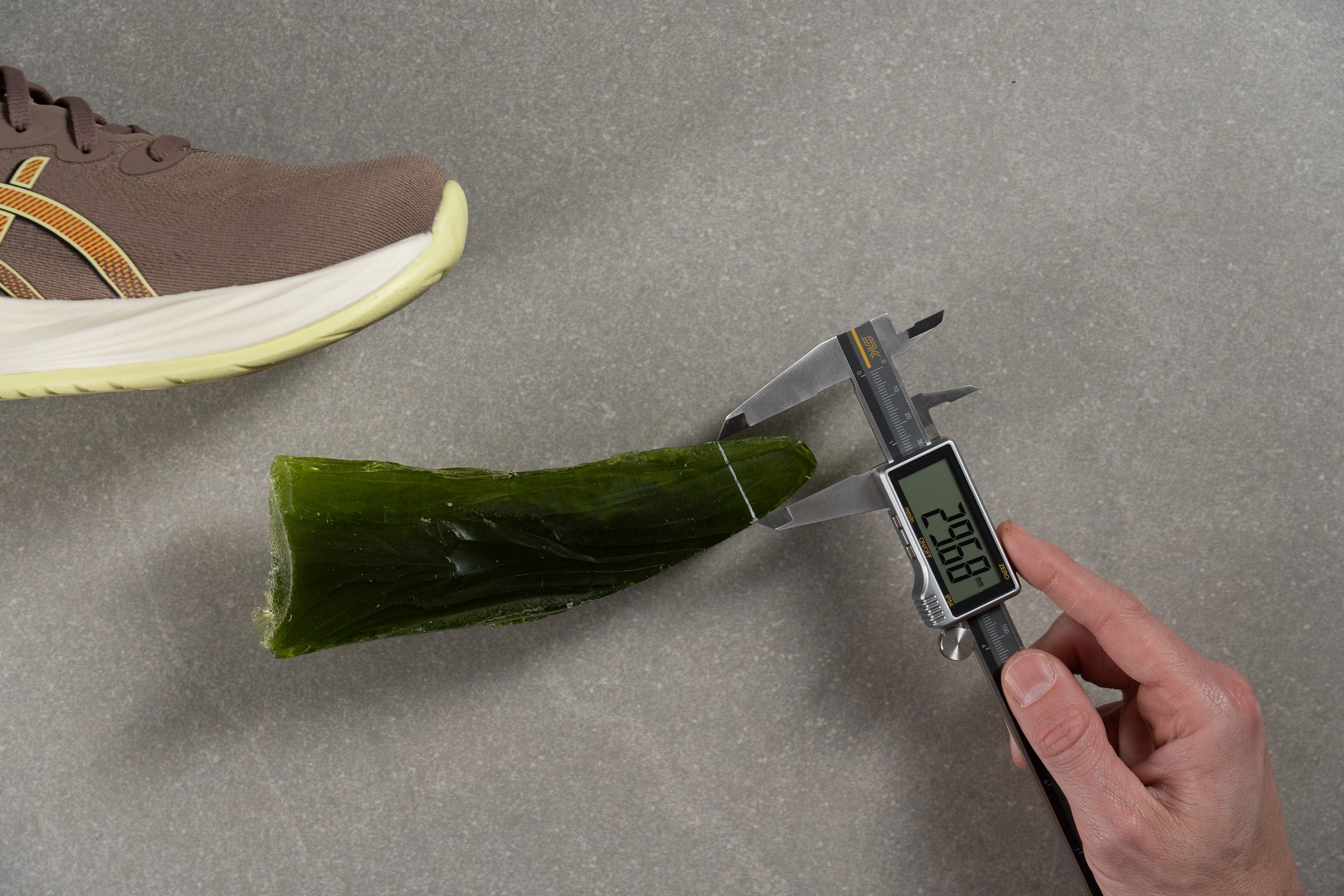
| Gel Cumulus 27 | 29.7 mm |
| Average | 27.1 mm |
Traction / Grip
Traction test
The FluidRide outsole feels great underfoot, and traction is solid—scoring 0.50 in our wet-condition grip test. That’s a small upgrade from the previous version’s 0.48 and a good result for this kind of rubber.
It provides good grip on wet roads and reliable traction in dry conditions, offering enough control for most training runs. While it may not rank among the grippiest ASICS shoes, it handles everyday runs well.
| Gel Cumulus 27 | 0.50 |
| Average | 0.48 |
Outsole design
One of the unique features of the Cumulus 27 is the FluidRide outsole, which leaves no one indifferent. You either love its soft-and-silent feel or dislike its limited versatility in different weather conditions and on varied terrains.
But what is FluidRide? It’s an outsole crafted from EVA foam with a protective, durable coating to minimize wear—yet it remains noticeably softer than a traditional rubber-based outsole. It aims to deliver smoother landings.
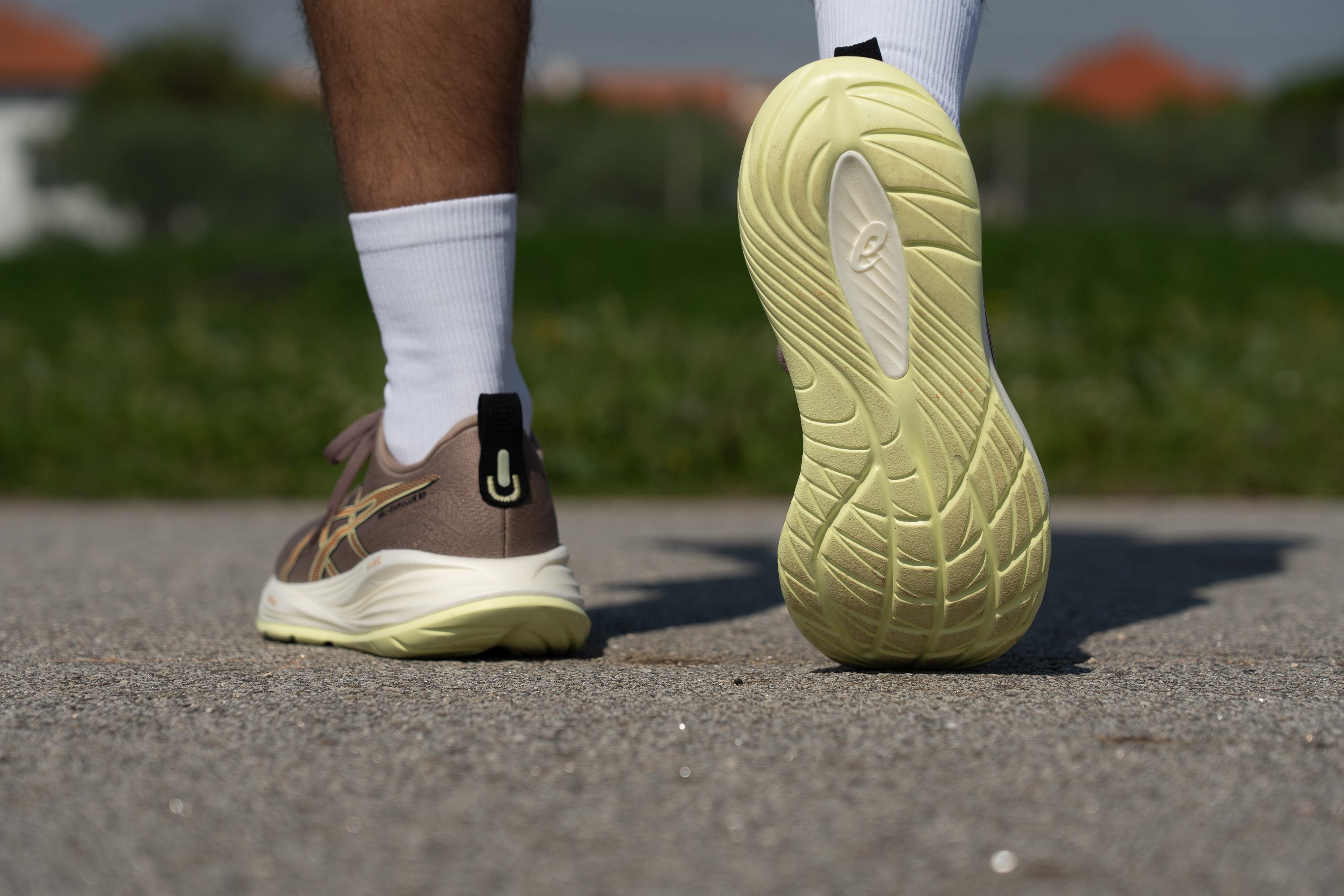
Flexibility / Stiffness
The ASICS Gel Cumulus 27 scored 15.1N in our longitudinal flex test, placing it in a solid spot for daily runs, relaxed jogs, and even casual use. Still, we think a touch more flex would’ve been ideal in terms of comfort.
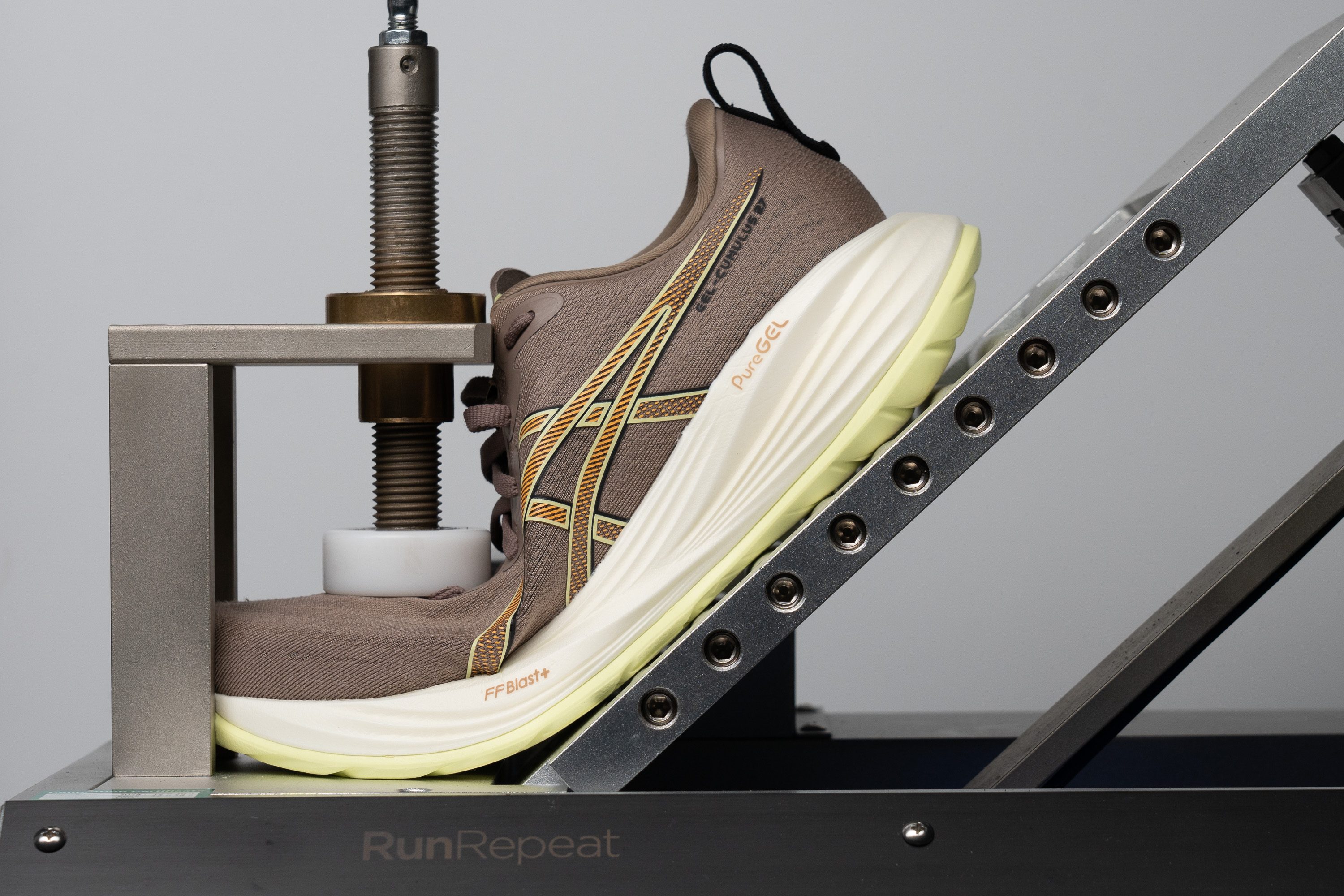
| Gel Cumulus 27 | 15.1N |
| Average | 15.3N |
Weight
We're glad to report that the Cumulus 27 still sits around the average in terms of weight and didn’t get noticeably heavier.
We had a rough time with the Hoka Clifton 10 after its weight jump, but fortunately, at 9.20 oz or 261g, this isn’t a step back from its predecessor.
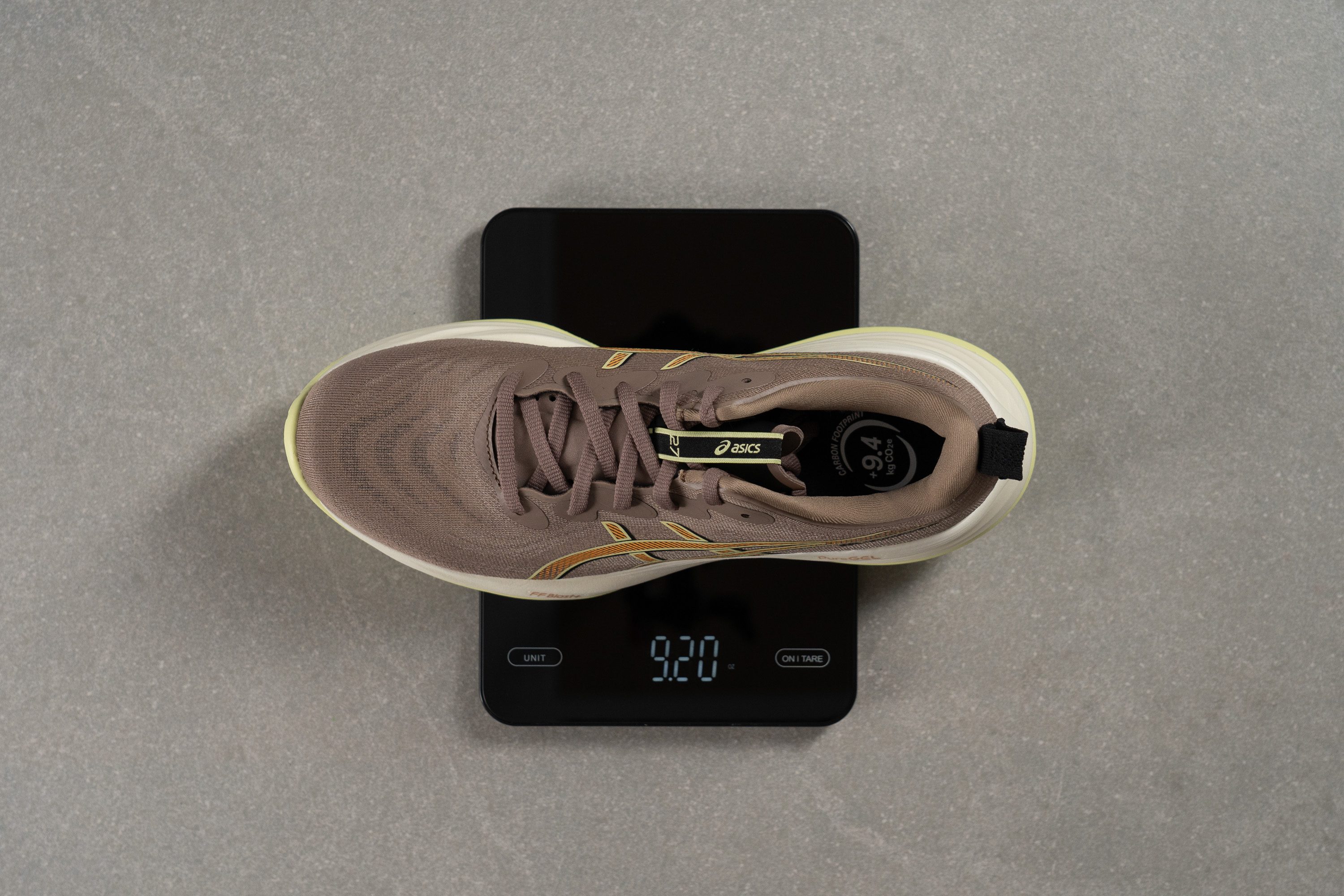
| Gel Cumulus 27 | 9.2 oz (261g) |
| Average | 9.3 oz (264g) |
Breathability
One area we were really hoping to see improved in the Cumulus 27 was breathability. In the past version, it felt a bit underwhelming for a daily trainer that can should be able to handle long runs.
But instead of progress, we discovered a step in the opposite direction. After running our smoke-pumping test, it became clear the airflow was poor, forcing us to give it a disappointing 2 out of 5. This upper just doesn’t handle heat well.
To be fair, this upper might work nicely for cold-weather runs. But for runners in warmer regions, this kind of heat-trapping design can feel like a deal-breaker.
When we placed the shoe over a strong light source, we noticed how the thick jacquard mesh blocks most of the passage. Air struggles to escape, and moisture lingers far too long inside the shoe.
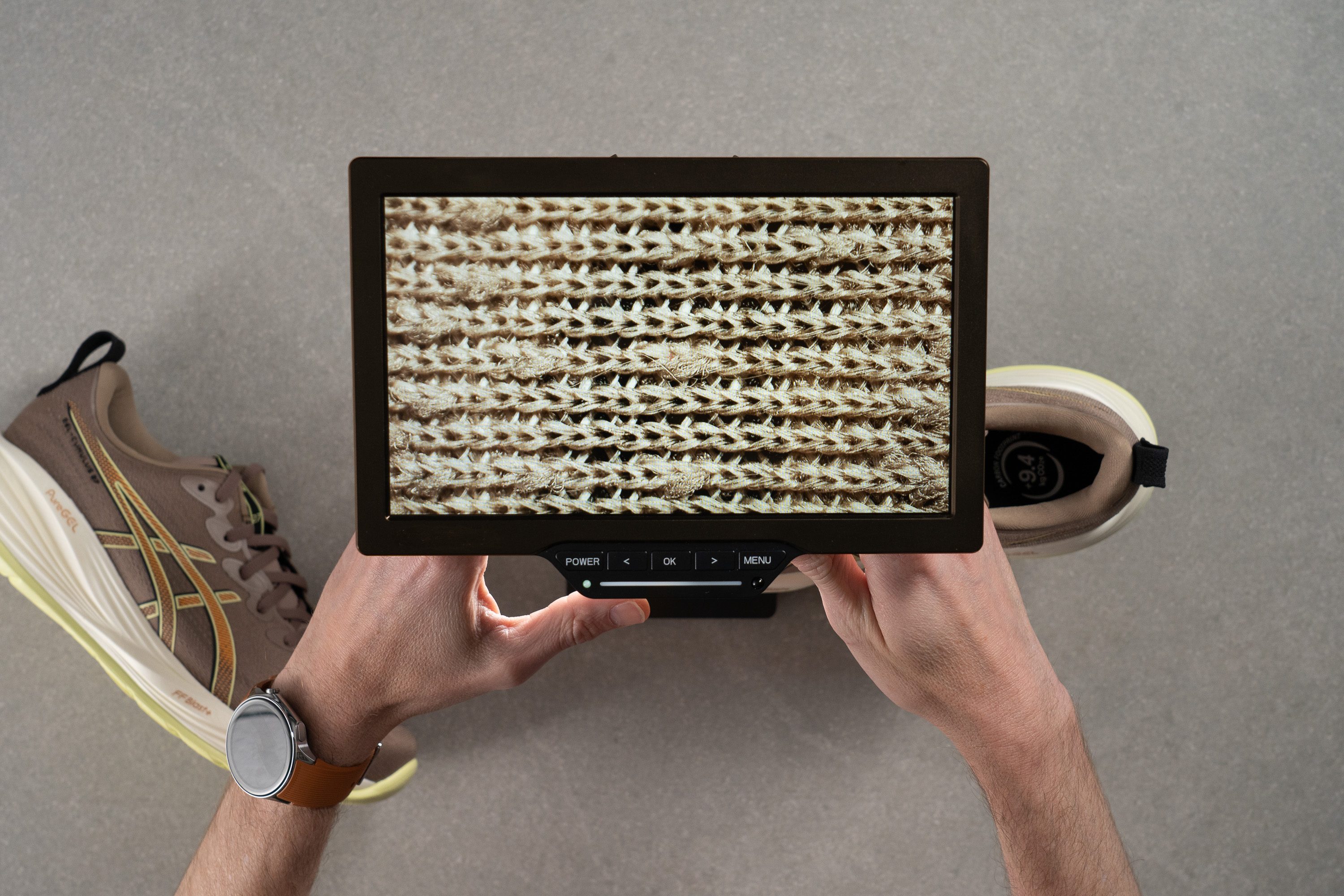
A closer inspection under our digital microscope revealed what the light hinted at.
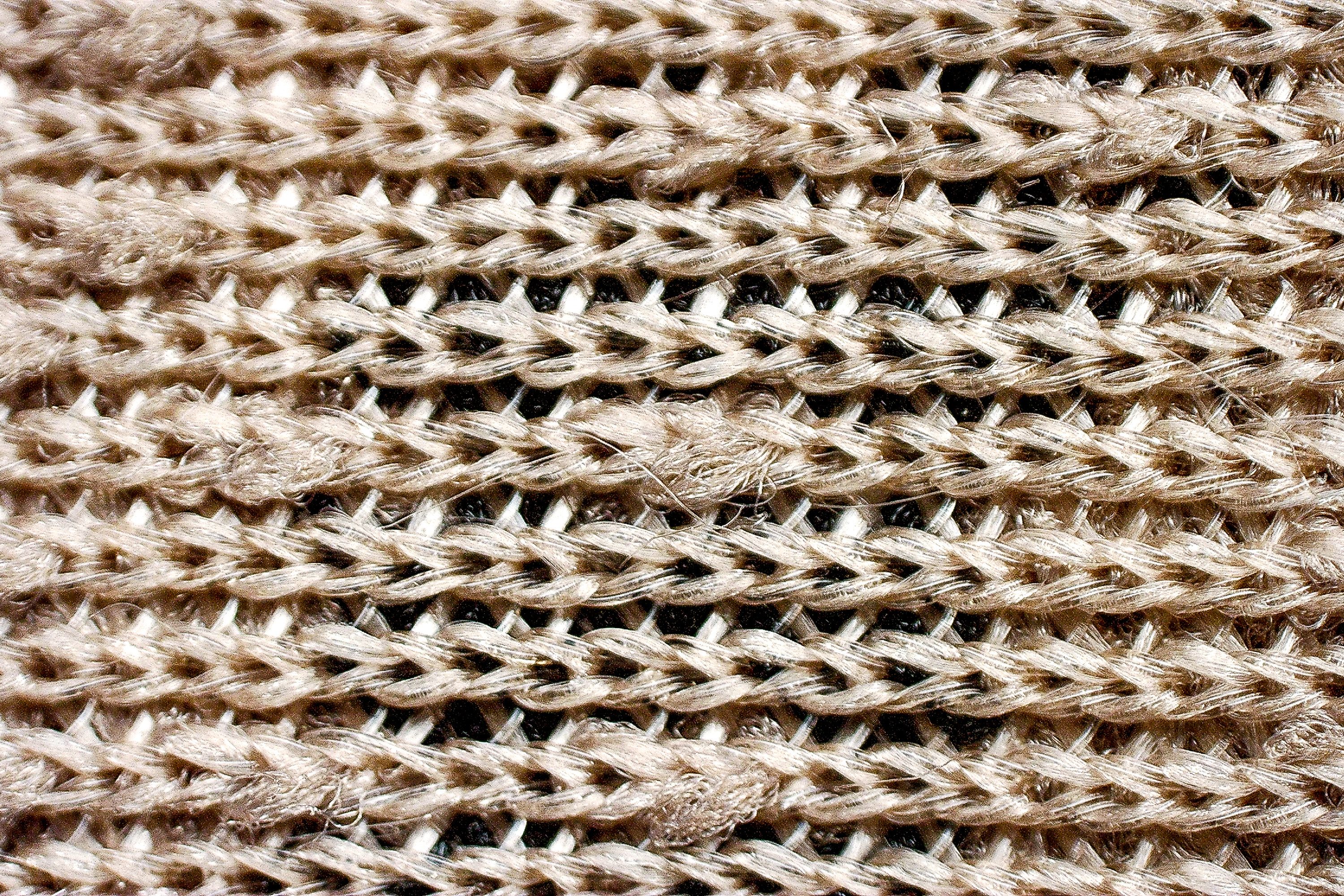
The upper does have a few thin zones, but the rest is filled with tightly woven fabric and lacks larger ventilation holes.
Still, comfort-wise, the upper is great. The mesh is smooth to the touch, and step-in feel is really good for the price of the shoe. For runners who don’t train in high heat, it's a solid pick.
| Gel Cumulus 27 | 2 |
| Average | 3.7 |
Stability
Lateral stability test
The Cumulus line has always been an easy pick, mainly because it does so many things right—stability included.
In our view, everything feels dialed in at a solid 7/10 or 8/10 level, offering enough support for neutral runners. However, if someone needs world-class support, a dedicated stability shoe like the Kayano 31 would likely be a better match.
Torsional rigidity
Over the last two years, we’ve noticed a clear trend—ASICS has been making most of their training shoes noticeably more rigid, moving from moderate results in this test to max scores.
The Cumulus 27 is a prime example of that shift, hitting 5/5 in this edition, the same as carbon-plated shoes. It’s a simple way to boost underfoot stability, though it does make the ride feel a bit less natural by limiting flex.
| Gel Cumulus 27 | 5 |
| Average | 3.5 |
Heel counter stiffness
We discovered another clear trend in shoe design—heel counters are getting noticeably stiffer. While average daily trainers once had flexible heel areas, models like this one now score a high 4/5 and use extra-plush, comfortable padding to balance out that firmness. Again, this is all part of the stability-first shift we’ve been observing.
| Gel Cumulus 27 | 4 |
| Average | 2.9 |
Midsole width - forefoot
And the same pattern shows up with midsole width. Most brands are now going for wider platforms to achieve more stable landings.
We discovered that this version keeps the same measurements as its predecessor—no extra expansion needed. The base was already broad enough, with a support-ready shape similar to a stability shoe.
In the 27th edition, we tested and recorded 120.2 mm, nearly identical to last year's 120.0 mm. So if you're upgrading from version 26, the feel will remain familiar.
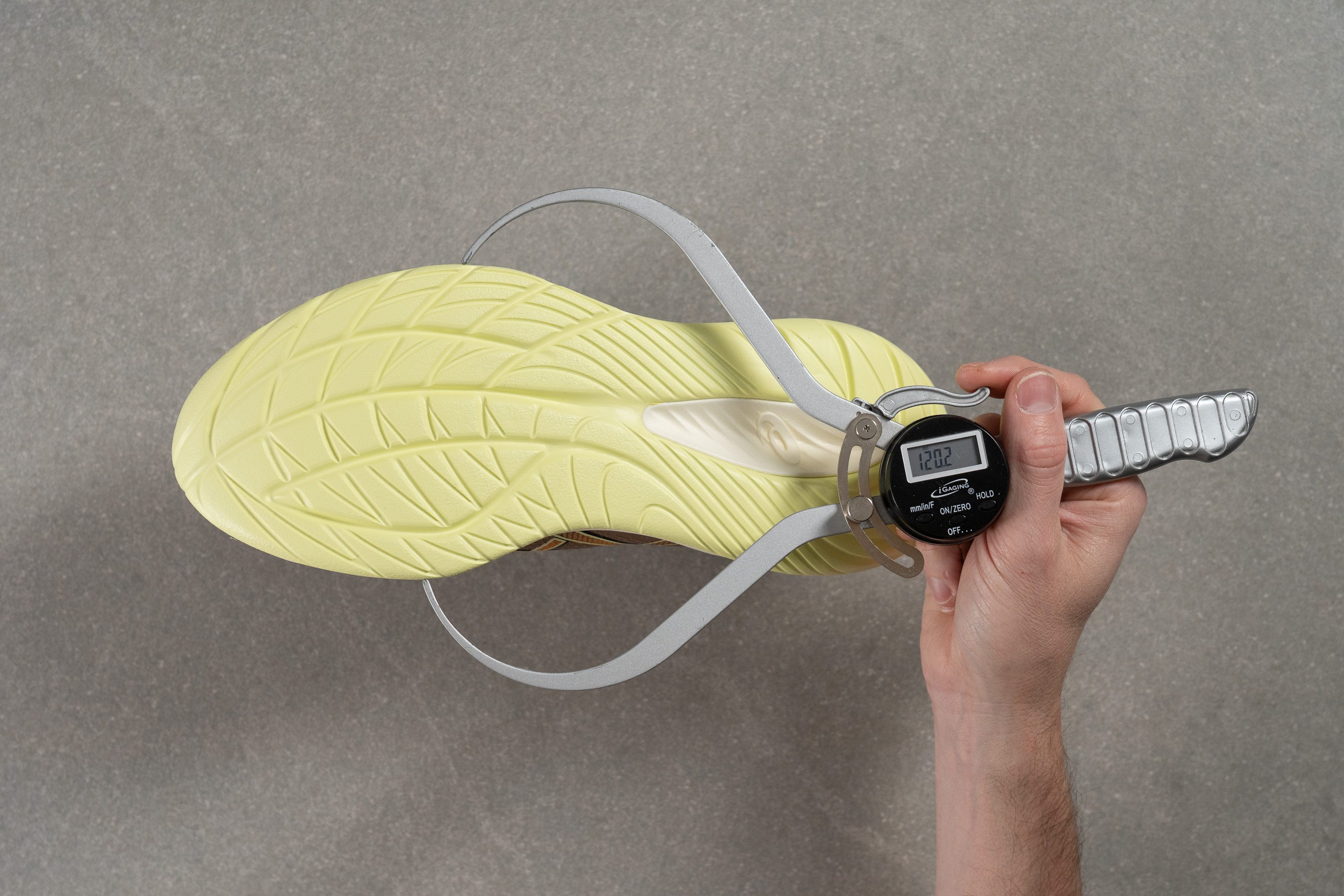
| Gel Cumulus 27 | 120.2 mm |
| Average | 114.3 mm |
Midsole width - heel
We saw the same trend in the heel, with an extra-wide 100.7 mm measurement that now feels almost standard in ASICS shoes—but if you compare it to older versions of the Cumulus, it's a huge change that’s impossible to ignore.
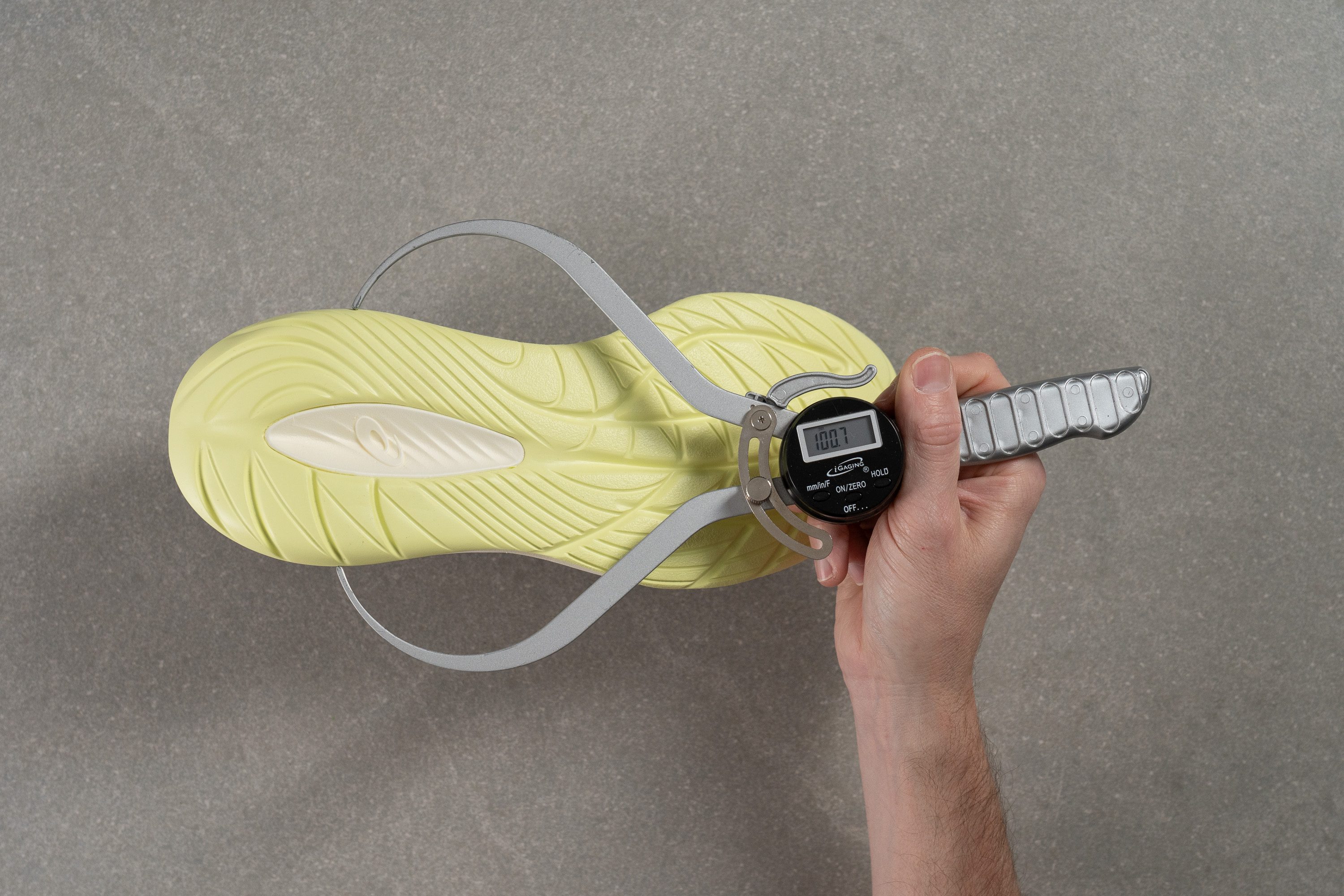
| Gel Cumulus 27 | 100.7 mm |
| Average | 90.7 mm |
Durability
Toebox durability
The upside of the limited ventilation is that the Cumulus 27 shows strong durability—earning our highest lab score. And achieving that in our Dremel tests is no small accomplishment!
| Gel Cumulus 27 | 5 |
| Average | 2.6 |
Heel padding durability
The streak continues for the Cumulus with another flawless 5/5—this time for its plush yet durable heel padding area.
| Gel Cumulus 27 | 5 |
| Average | 3.4 |
Outsole durability
Being made from EVA foam, we didn’t expect the Cumulus 27 to shine in this test. And true to our expectations, the Dremel tip sank 2.8 mm—nearly triple the average result.
However, for this type of foam-based outsole, it’s actually a respectable outcome, even if it looks worse compared to more traditional designs with standard rubber.
| Gel Cumulus 27 | 2.8 mm |
| Average | 1.1 mm |
Outsole thickness
To counter the high wear of the foam-based outsole, ASICS added a thick 8.4 mm layer—unsurprisingly, around 3x the average too.
So in net terms, durability should match a regular daily trainer. It wears faster, but you get more material to burn through—and enjoy softer, smoother landings along the way.
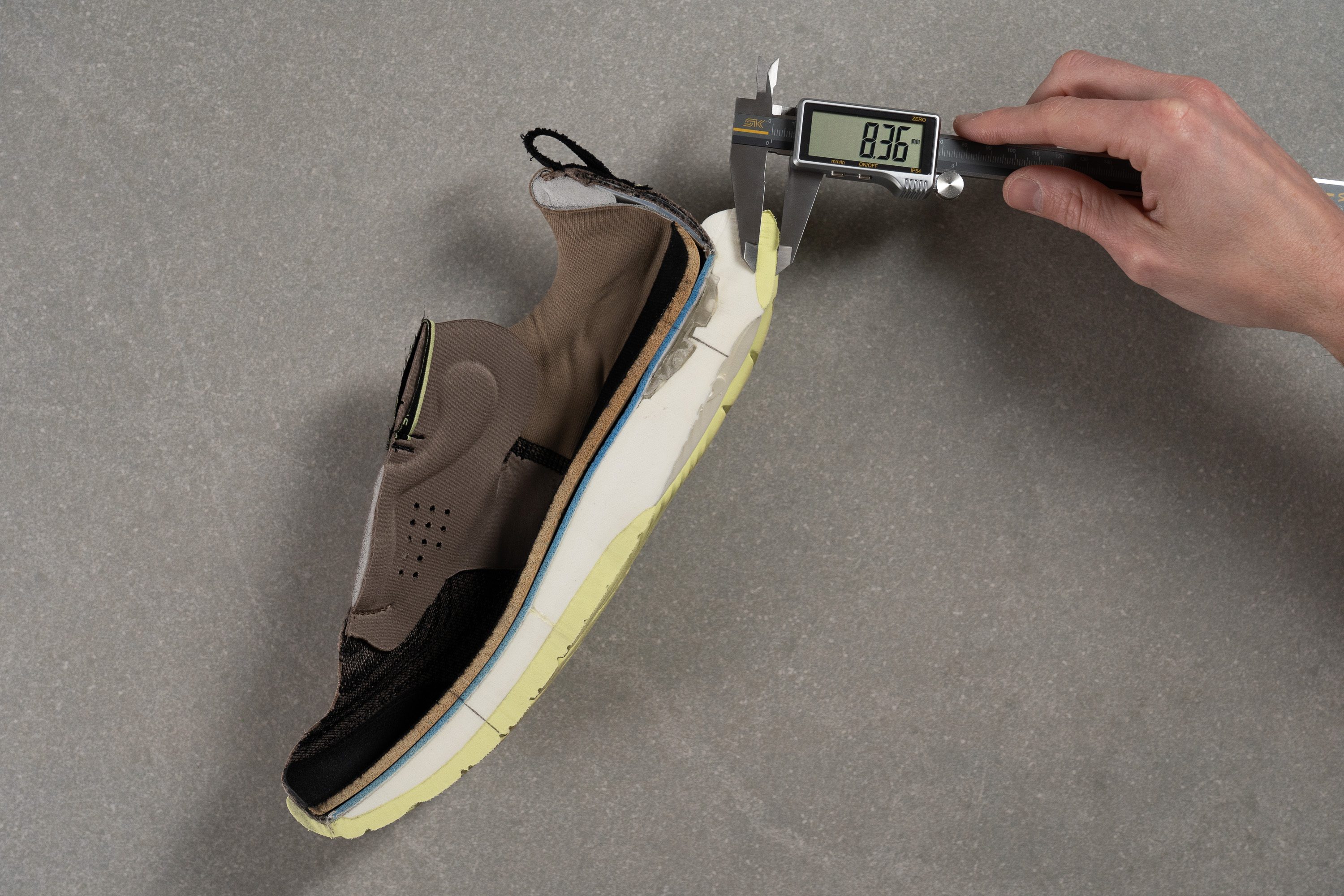
| Gel Cumulus 27 | 8.4 mm |
| Average | 3.2 mm |
Misc
Insole thickness
The insole doesn’t bring anything remarkable, though at 5.3 mm, it’s slightly thicker than what we usually find in the lab.
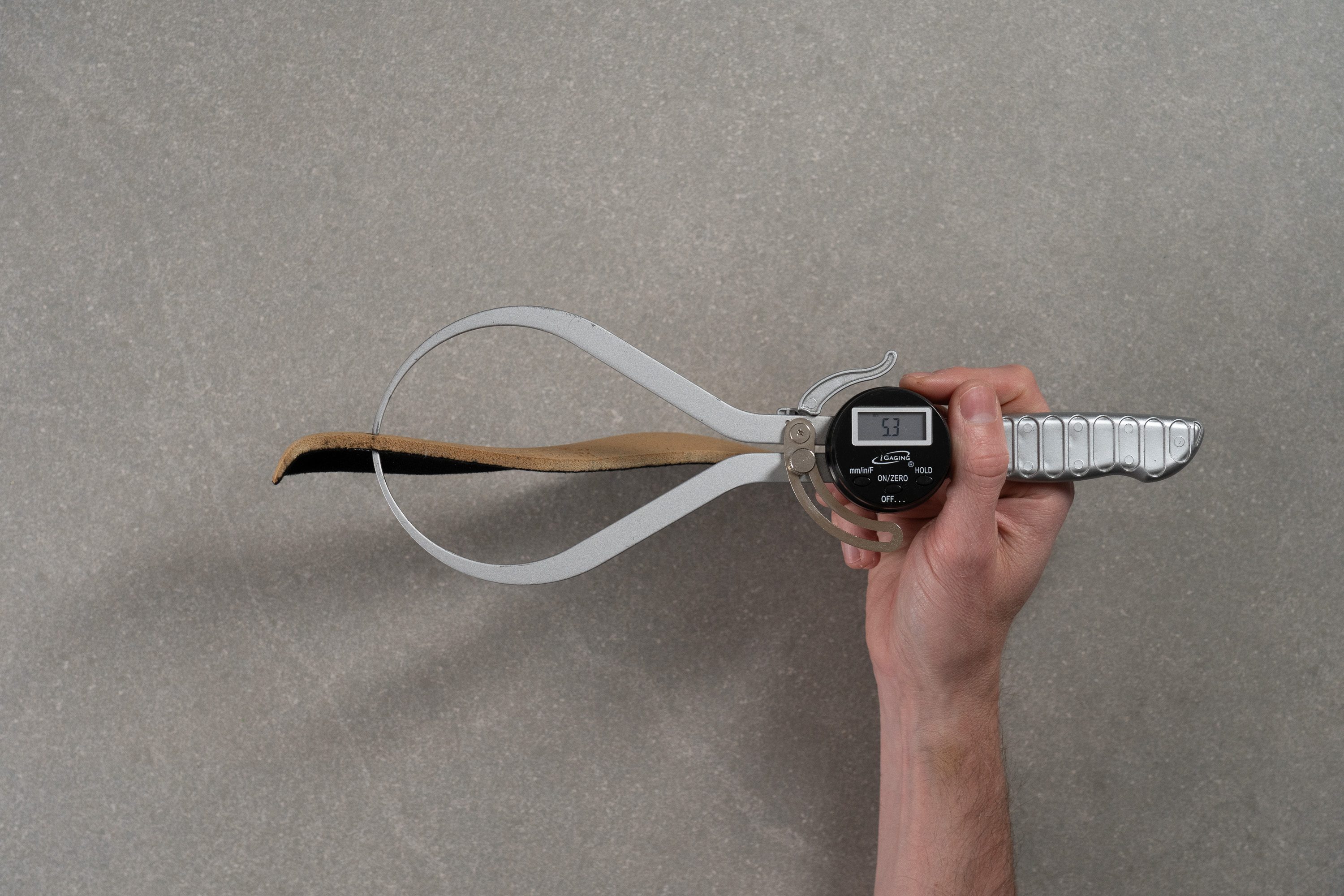
| Gel Cumulus 27 | 5.3 mm |
| Average | 4.5 mm |
Removable insole
You can easily swap in your own orthotics into the Cumulus 27 without any issues. However, you'll lose is the printed carbon footprint that ASICS placed right under the heel.
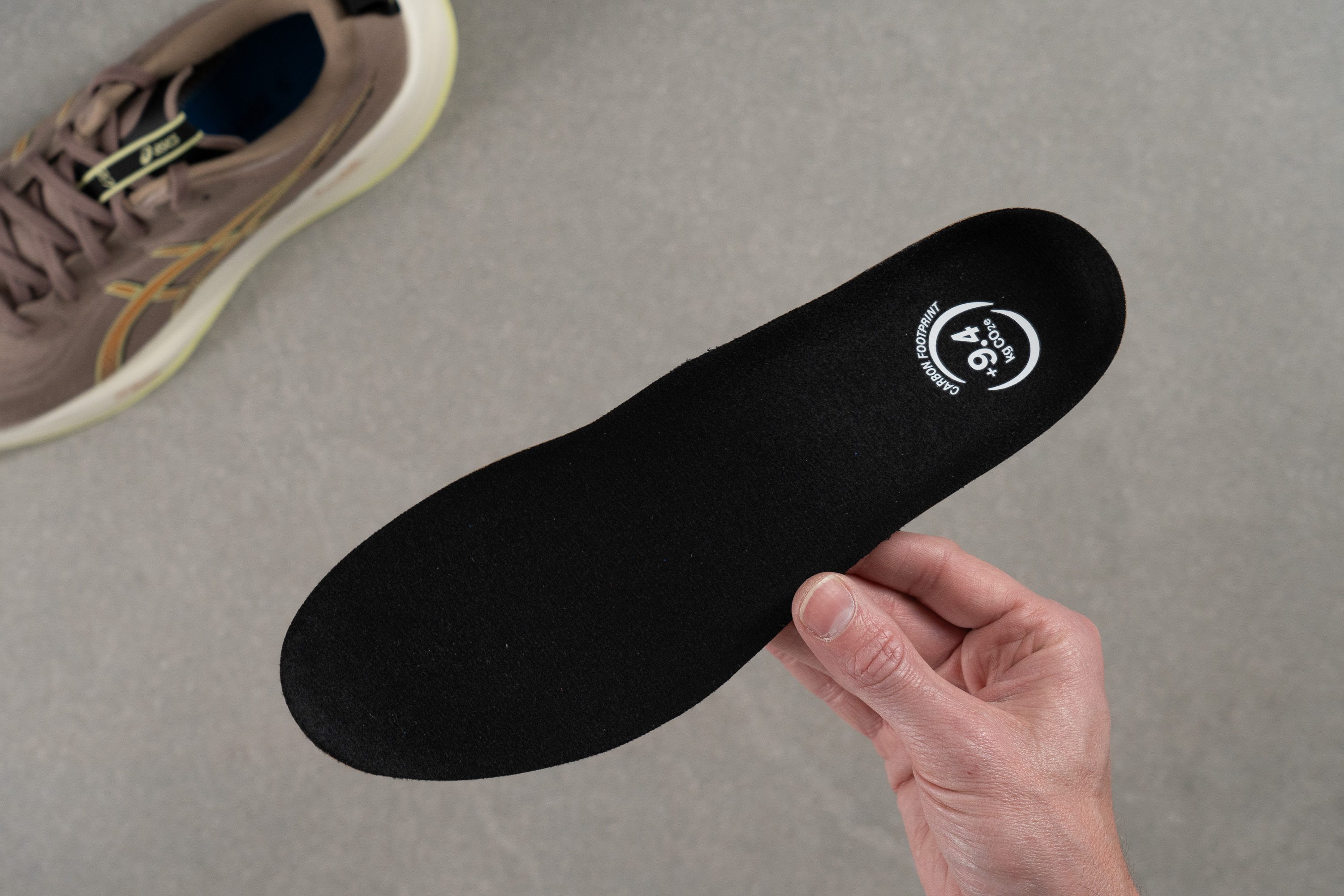
| Gel Cumulus 27 | Yes |
Midsole softness in cold (%)
Since it’s made from EVA, it wasn’t surprising that the foam underperformed in our freezer test—getting 39% firmer after just 20 minutes in the cold.
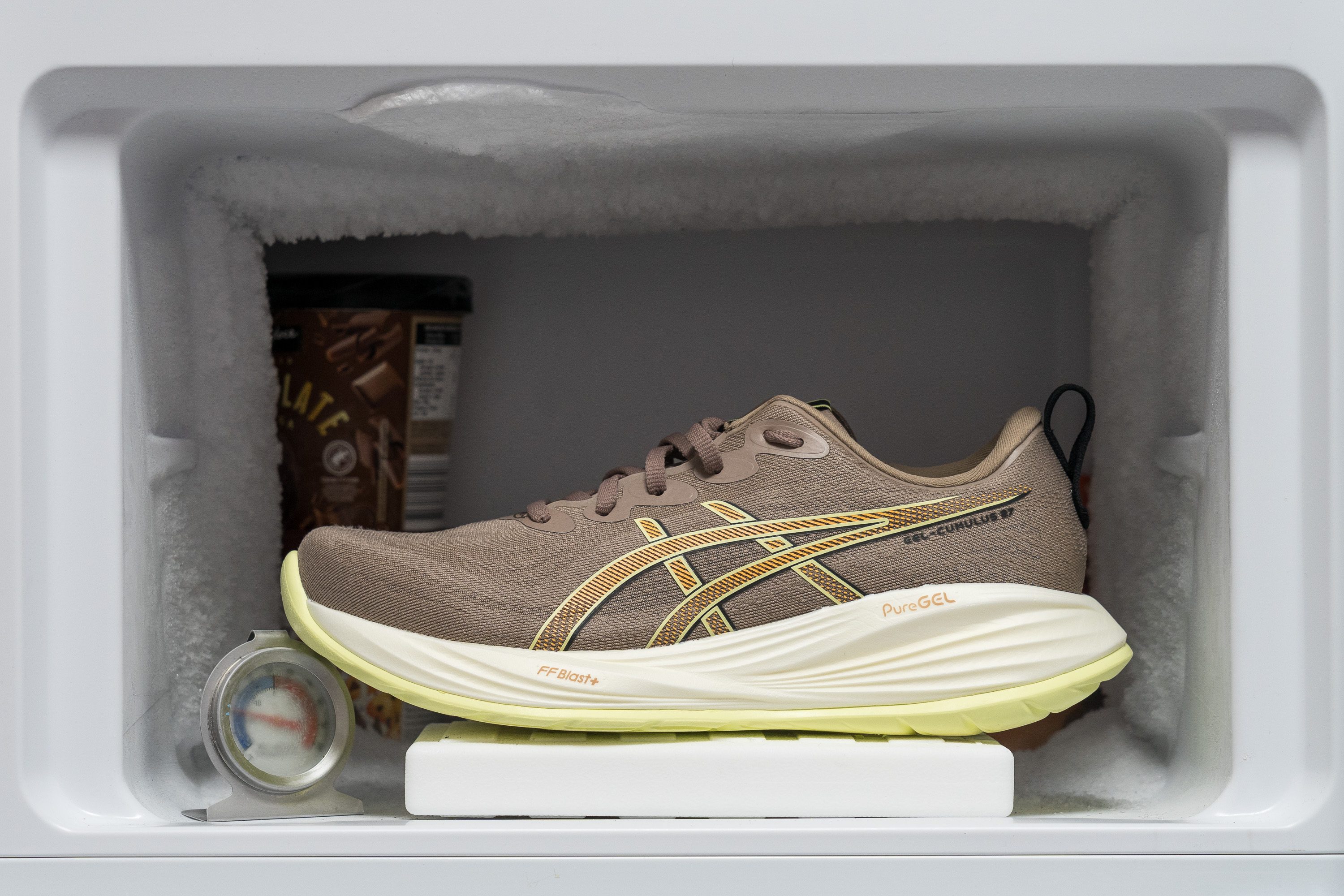
| Gel Cumulus 27 | 39% |
| Average | 24% |
Reflective elements
The Cumulus 27 includes subtle reflective details on the heel—perfect for boosting visibility to vehicles approaching from behind during low-light runs.
| Gel Cumulus 27 | Yes |
Tongue padding
In their push to keep the Cumulus 27 feather-light, ASICS went with a thin (1.7 mm) tongue that has barely any padding where the laces tighten, though there’s some cushiony foam lower down to ease pressure.
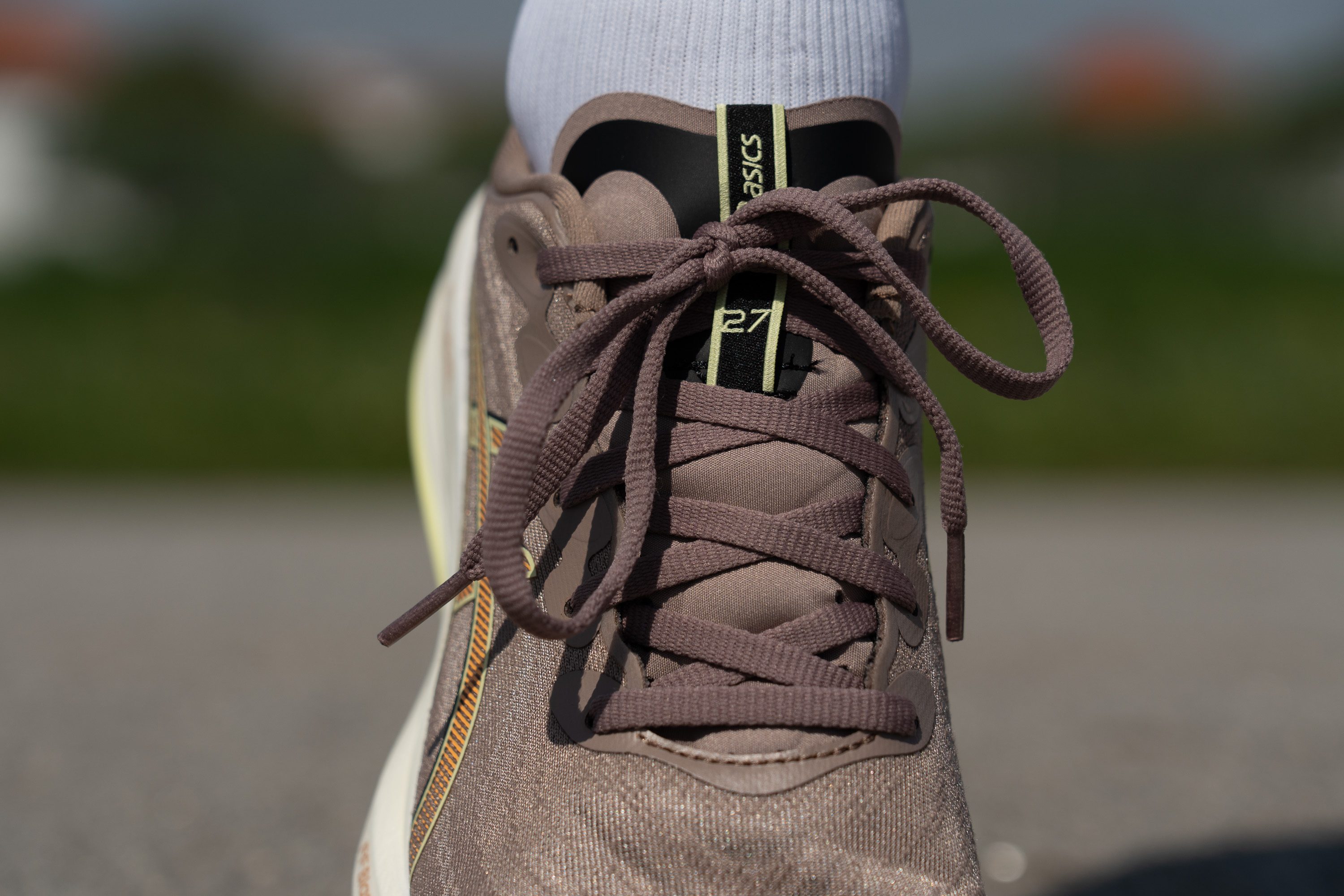
It’s an unusual setup, as we’re more used to seeing it reversed—foam near the knot. Still, we believe many runners might prefer a more protective, full-length foam setup in a daily trainer, even if it adds a few grams. And that said, we're not surprised! Extra-thin tongues have been ASICS' go-to choice for the past few years.
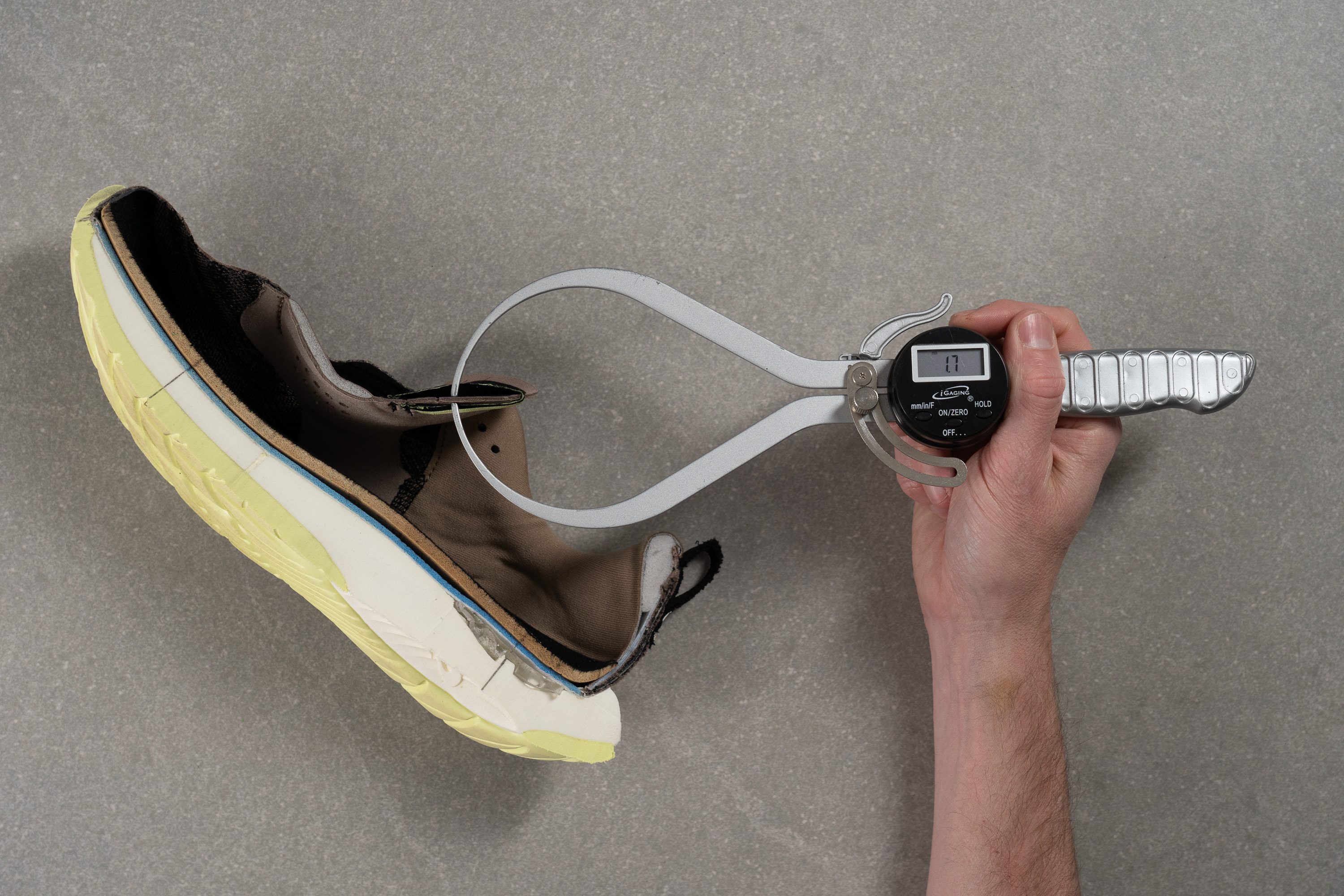
| Gel Cumulus 27 | 1.7 mm |
| Average | 5.8 mm |
Tongue: gusset type
The tongue is secured with a semi-gusseted design—probably the ideal setup for a lightweight daily trainer. It keeps the tongue in place without adding unnecessary weight.

| Gel Cumulus 27 | Both sides (semi) |
Price
It was great to see that ASICS kept the price of the Cumulus 27 refreshingly competitive, avoiding a spike that would’ve likely hurt sales.
At this price point, it feels fair for a reliable daily trainer that performs this well—and it’s a welcoming entry point for many first-time ASICS runners.
| Gel Cumulus 27 | $140 |
| Average | $152 |
Heel tab
The Cumulus 27 adds a finger-loop heel tab that was missing in the Cumulus 26, giving the shoe a more refined and less plain look from the back.

| Gel Cumulus 27 | Finger loop |

